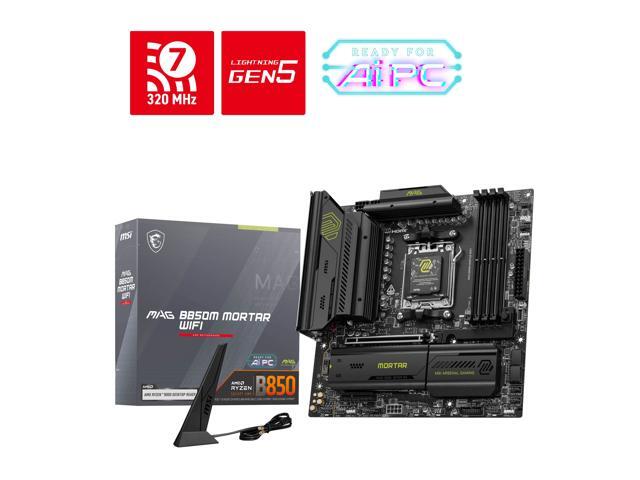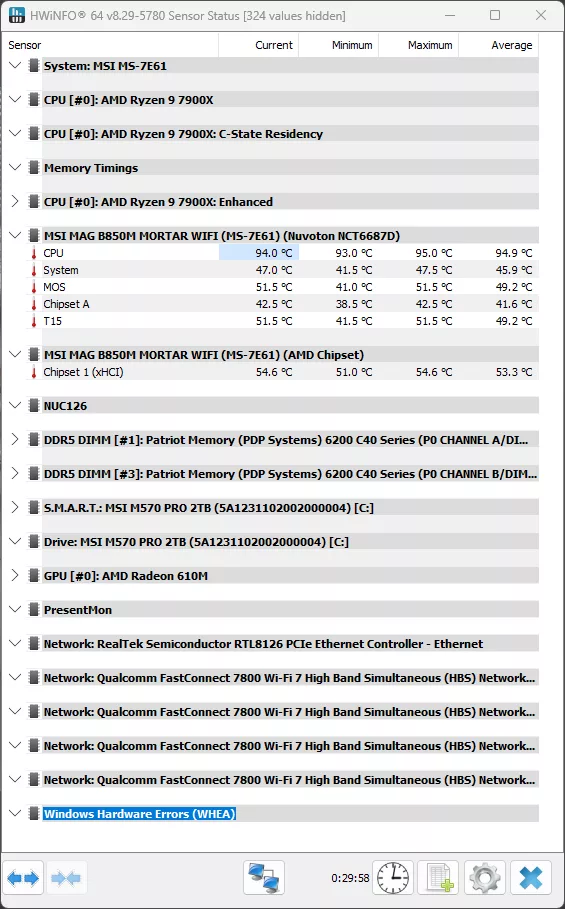
Introduction
Today, we have the MSI MAG B850M MORTAR WIFI, one of MSI’s latest M-ATX form factor motherboards. As a reminder, the MAG line-up from MSI is the lowest level of their three main tiers (MEG, MPG, and MAG) of products, and as it is designed to be the go-to for the no-frills gamer at a good price. With a price tag of $239.99, it comes in around the middle of the B850 range of motherboards, but it does have some features that help justify this.
The MSI MAG B850M MORTAR WIFI is not a flashy motherboard by any means, and with it muted black and green color scheme, along with no on-board LEDs, it won’t be everyone’s cup of tea. However, it does have three (3) total M.2 NVMe slots, two (2) of which have MSI FROZR Cooling with the last on the back of the motherboard, and MSI’s EZ PCIe Release for quick release of your uppermost PCIe card. With all of these features, it makes this a formidable motherboard that could quite well exceed the expectations for a B850 product.
Packaging and Contents
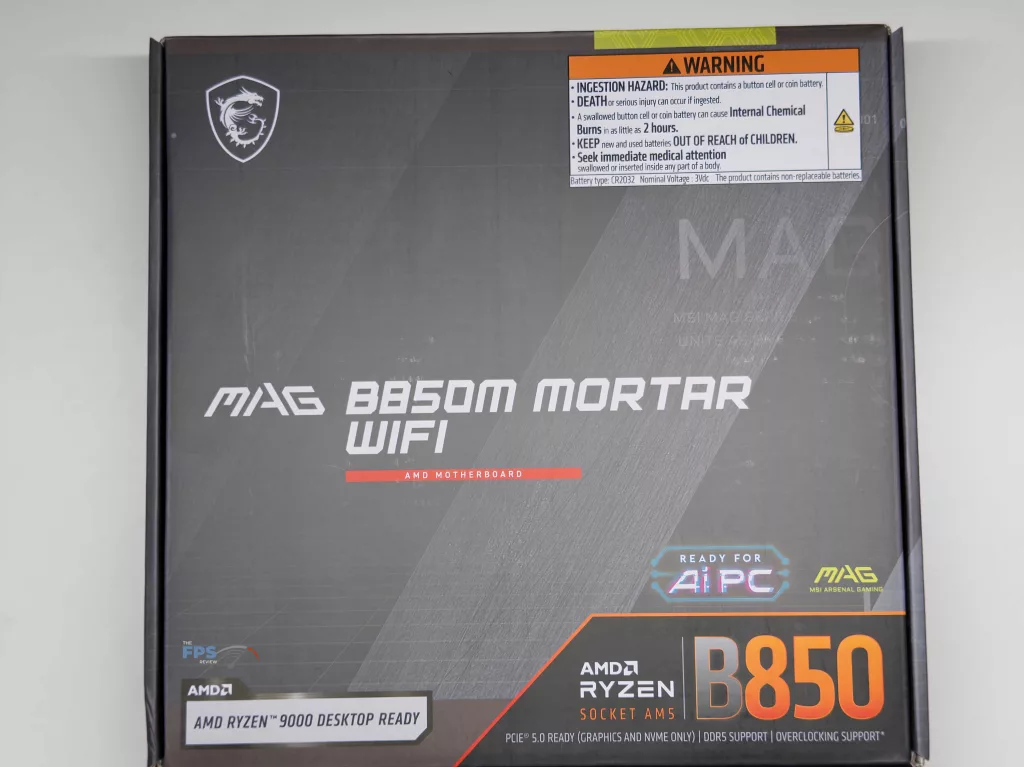
For the MSI MAG B850M MORTAR WIFI, MSI didn’t provide a ton of contents in the box, but they didn’t skimp either. As you open the box, you will find the motherboard well packaged and protected, with the WIFI antenna attached to the tray the motherboard is placed in. Below the tray, you will find all the contents that ship with the motherboard. Outside of the standard regulatory notices, quick installation guides, and stickers you will find the normal SATA cable, two (2) EZ M.2 Clip II’s, a single M.2 screw, the EZ M.2 Clip II Remover tool, a 1 to 2 EZ Conn-Cable, and MSI’s EZ Front Panel Cable for easy and clean wiring of your front panel connectors.
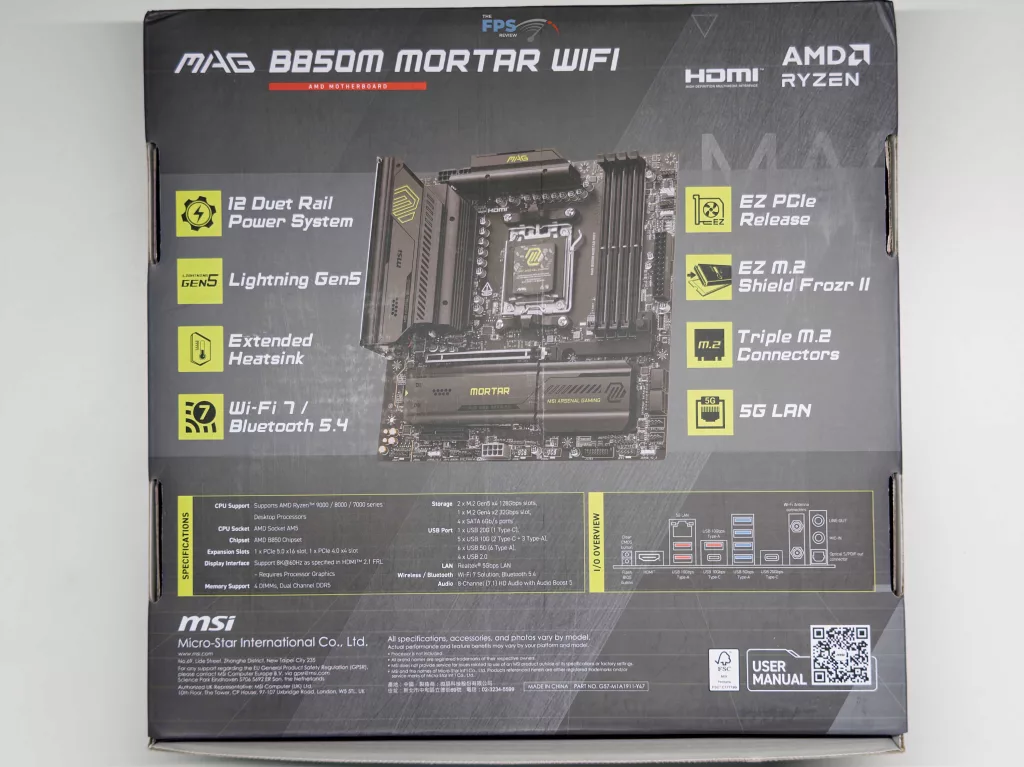
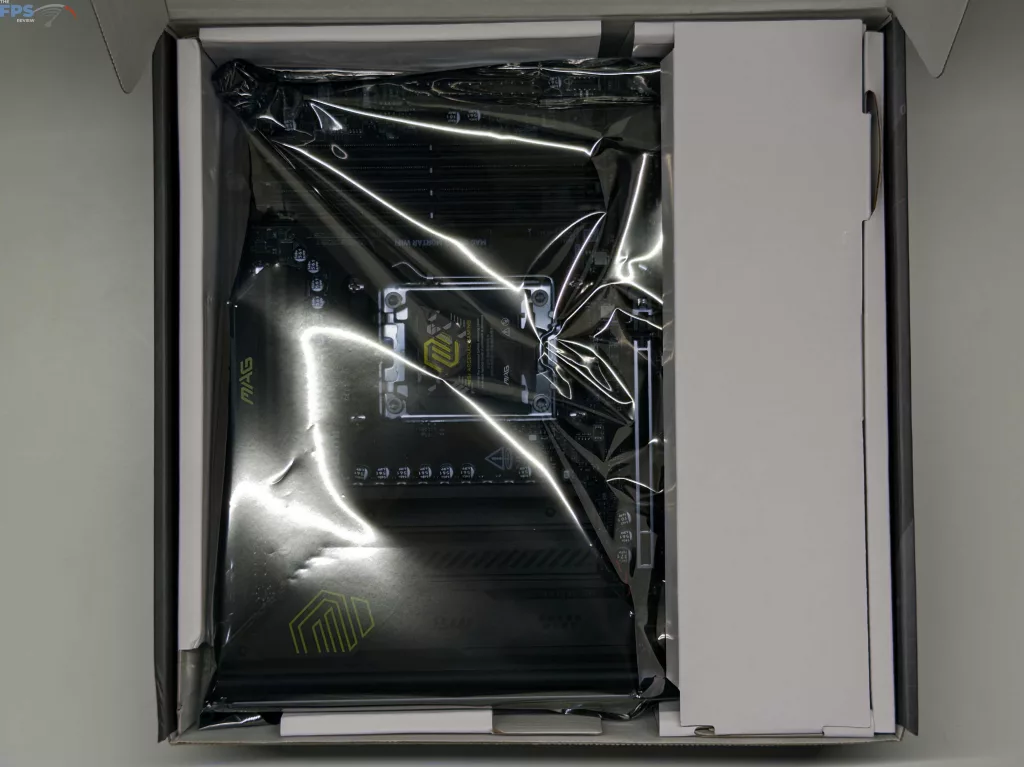
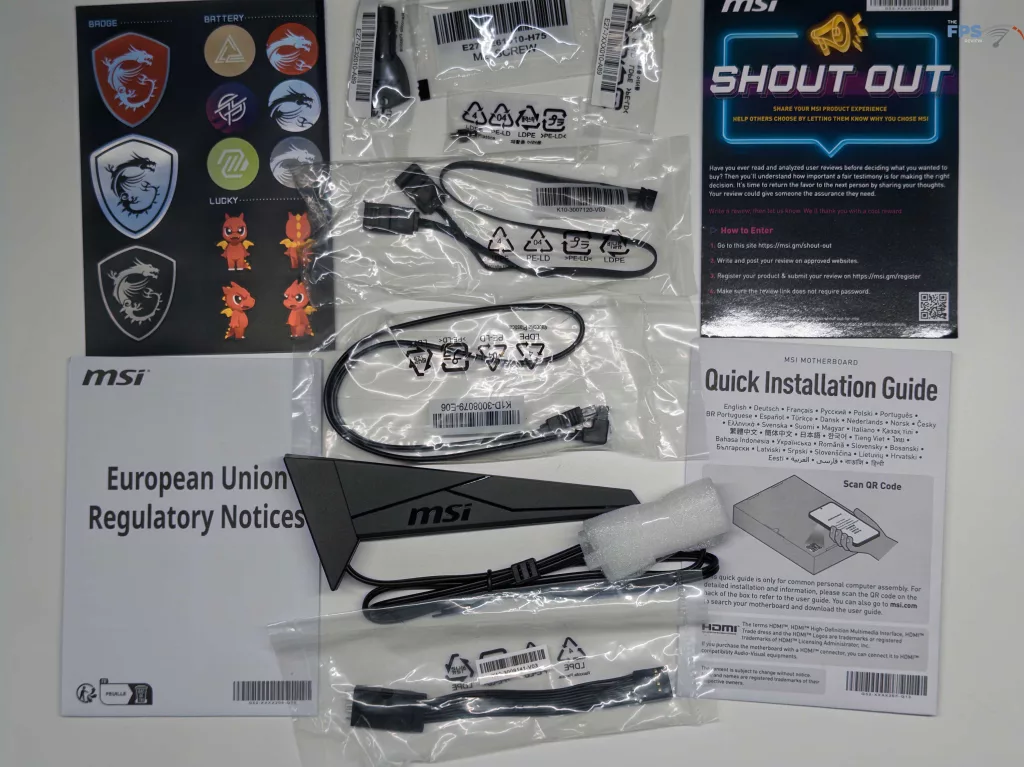
MSI B850M MORTAR WIFI Features
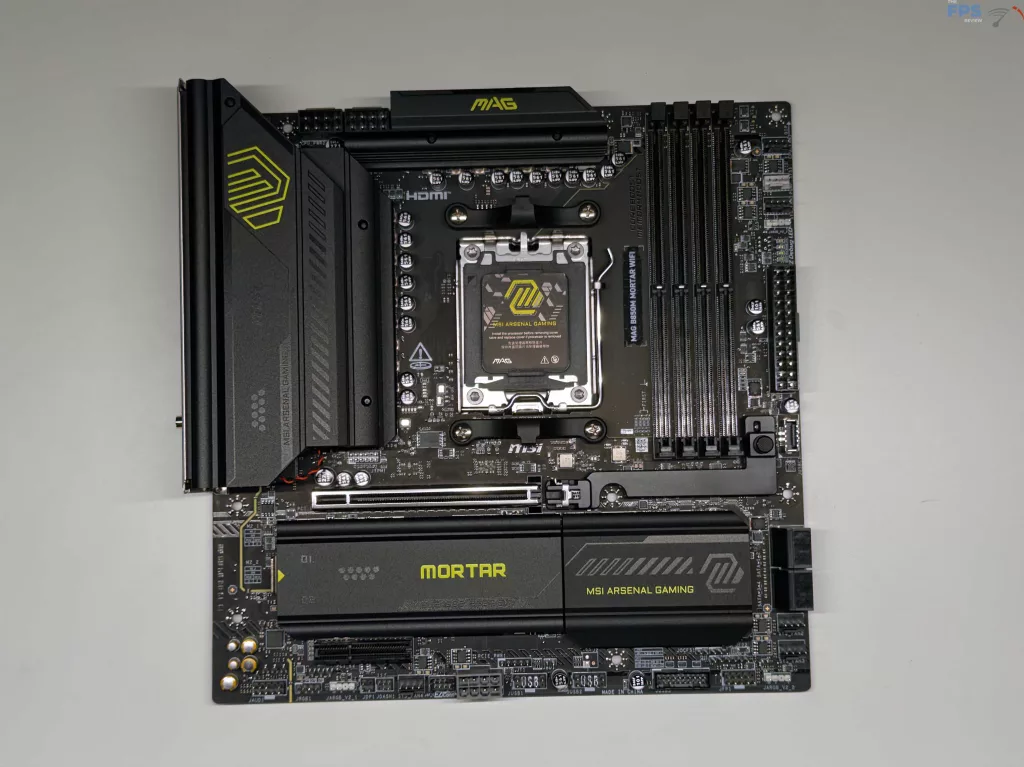
With the MSI MAG B850M MORTAR WIFI, MSI has continued to use its blacked-out, with green/yellow accents, design of the MSI Arsenal Gaming (MAG) series of motherboards. With this being a mATX form factor board, MSI has done well to have as many features as they have. You will find there are two (2) NVMe slots on the front of the motherboard, with an additional one located on the back side for a total of three (3) NVMe M.2 slots. After the NVMe slots, you will find there are two (2) PCIe slots, four (4) SATA ports, three (3) possible Type C USB ports, and an additional 13 Type A ports.
Power Delivery
Since this is not a full-size ATX motherboard, we don’t see an extravagant power delivery solution; however, that doesn’t mean that MSI skimped on it. MSI has gone with a 12+2+1 Duet Rail Power System, which has Smart Power Stages capable of 60 Amps of power, all powered by two (2) 8-pin power connectors. The MSI MAG B850M MORTAR WIFI likely won’t win any overclocking competitions; however, it also won’t have any issue reaching the Precision Boost Overdrive (PBO) capability of most of AMD’s current generation of CPUs.
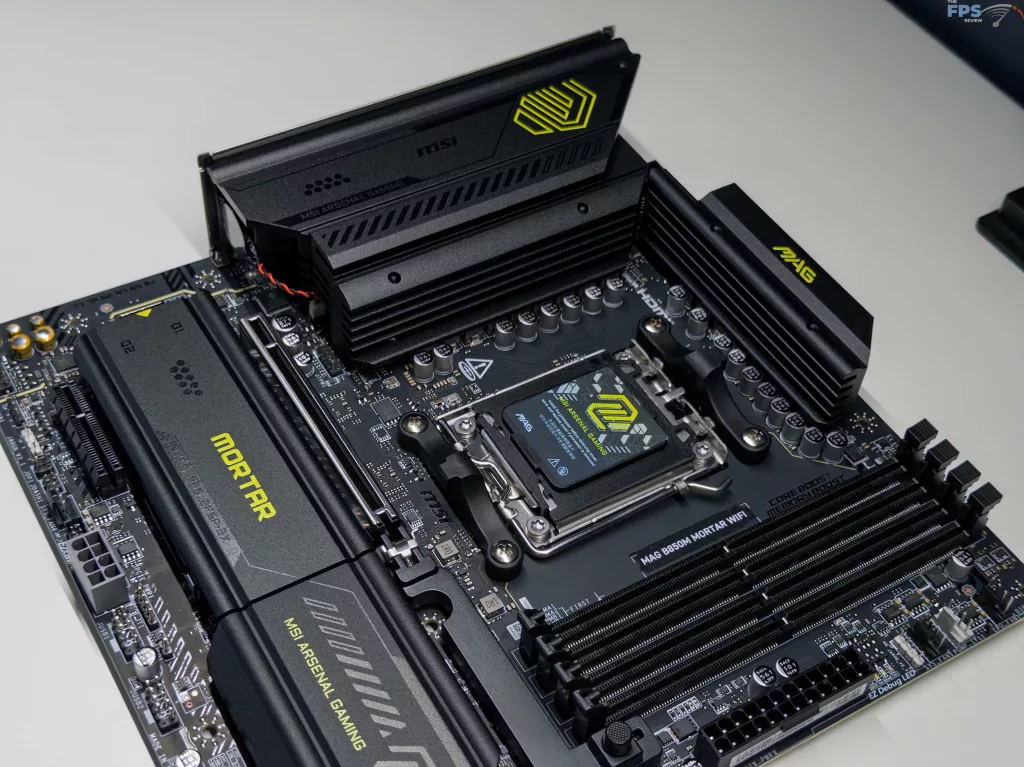
For all the heat from the power delivery, MSI is using their FROZR Design with an Extended Heatsink on the main power, and a “Heavy Plated VRM Heatsink” for the VRM and upper MOS. All of these heat sinks extend up a fair amount, and in our testing, we see that it was able to do the job in keeping the overall temperatures reasonable.
Memory and Storage
Similar to all other B850 series motherboards, the MSI MAG B850M MORTAR WIFI uses DDR5, un-buffered, non-ECC memory, with a maximum capacity of 64 GB per slot (256 GB total). With this, you will have the ability to use memory with AMD EXPO timings to easily “overclock” your memory, up to a claimed maximum of 8200+ MT/s total speed. We do not have memory on-hand that is rated at up to 8200 MT/s; however, we had zero issue reaching the 6400 MT/s speeds of our trusty Patriot DDR5 kit.
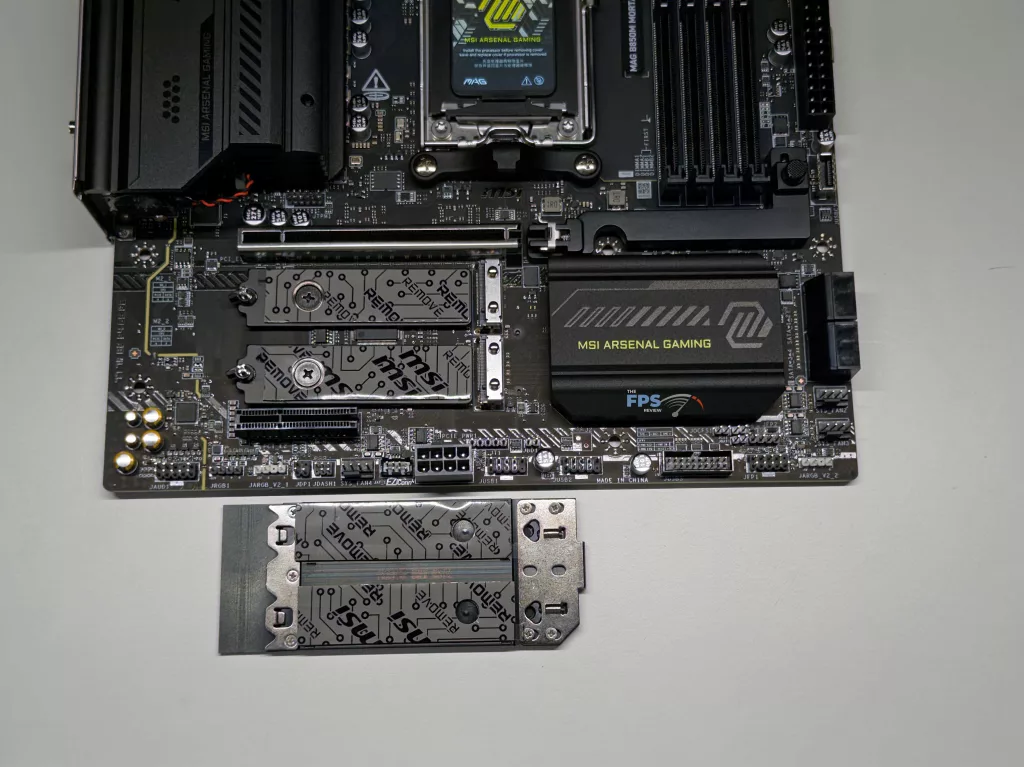
Storage for this motherboard is a total of three (3) M.2 slots for NVMe, all of which are designed to use a 2280 sized NVMe device (M.2_1/2 can support 2260 size). The slots located on the front of the motherboard are both Gen5 slots from the CPU, while the rear slot is from the Chipset. MSI helpfully labels each slot clearly, and includes information on where the PCIe lanes are from, the PCIe generation, and if it’s a SATA slot; all of this is in a box printed on the PCB right beside the slot. For cooling, MSI has provided a version of its EZ M.2 Shield Frozr II, which, along with being a single milled piece of aluminum, also has a quick release for easy removal. A nice touch MSI has done is include the line “Aug 1986” on the bottom of the cooler, which is the month and year that MSI was founded as a company. Beyond this, you will have the ability to swap the traditional clips for retention out with the EZ M.2 CLIP II system, which makes an already easy task even easier.
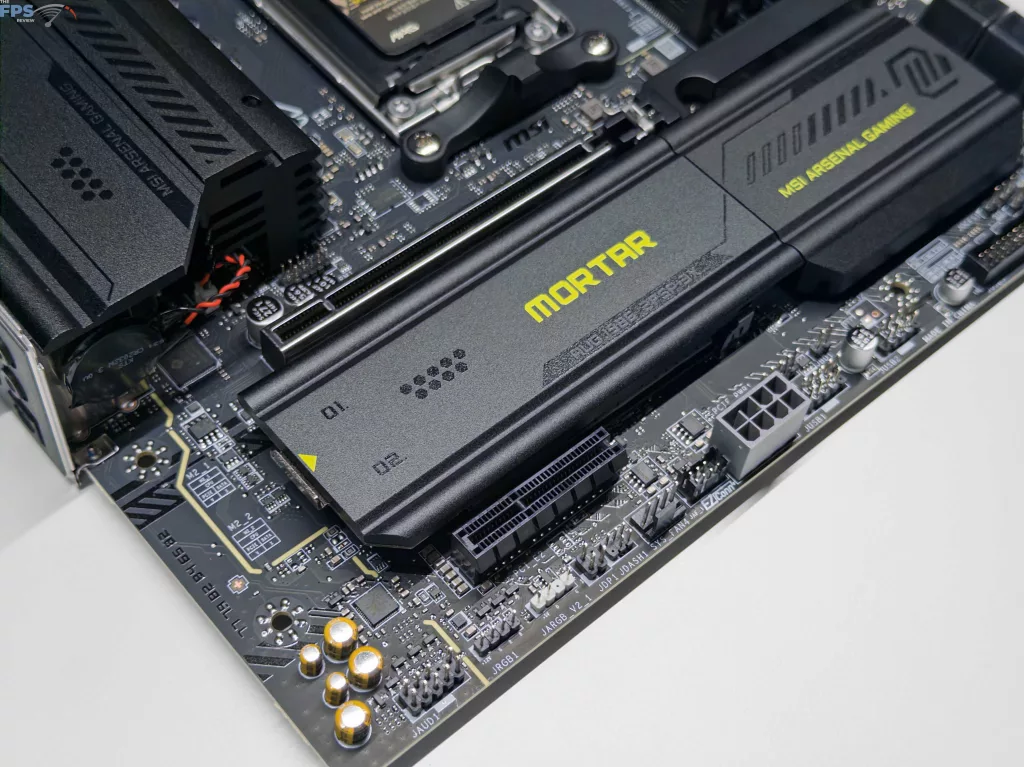
The last thing we want to mention is that ASRock has provided four (4) total SATA 6 GB/s ports for any other storage the end user might want to include.
Expansion
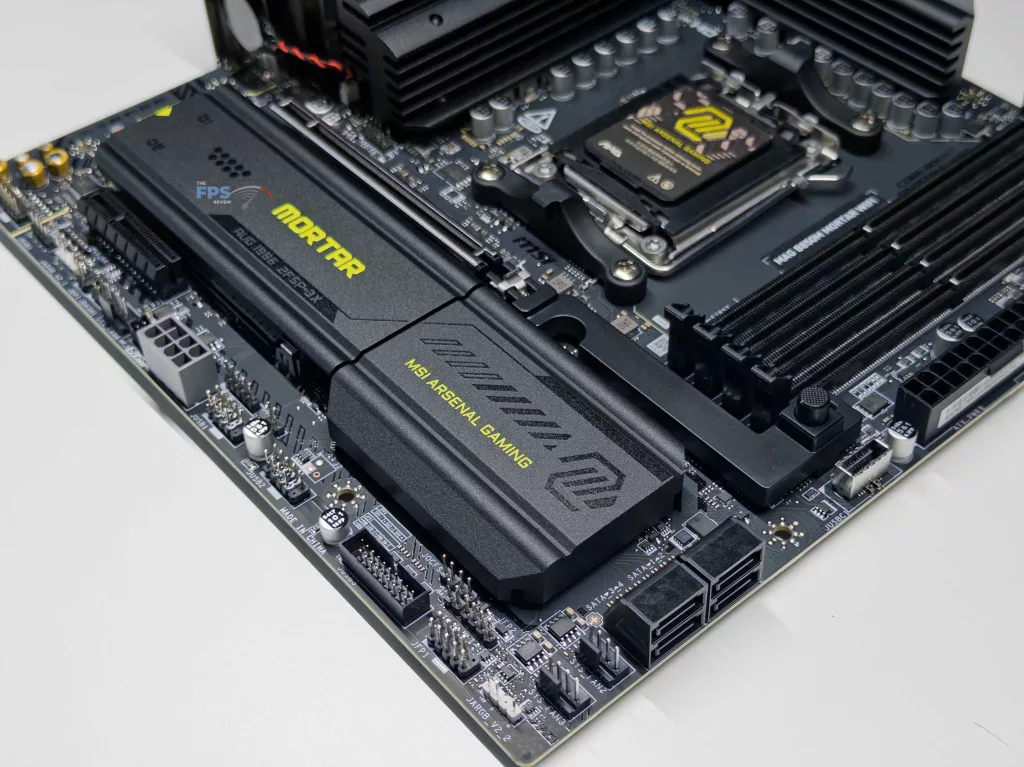
This motherboard has a total of two (2) PCIe slots for non-USB expansion, which can be limiting to some users, but for the majority of users out there, this is more than enough. The top-most slot is a full PCIe Gen5 x16 slot that is provided via the CPU, with the second slot being a Gen4 x4 slot provided by the B850 chipset. The Gen5 slot has a few features worth mentioning, as MSI has decided to provide a metal reinforcement for support of large sized graphics cards, along with MSI’s EZ PCIE release, which is a button located on the right most side of the motherboard instead of the traditional latch. This last item is especially appreciated when you need to remove a graphics card with a back plate. There are no limitations with using any mix of PCIe and NVMe M.2 slots, which is a nice feature to have.
I/O
For I/O, the MSI MAG B850M MORTAR WIFI is pretty well set up to cover most gamers, or even professional users. There is the ability for up to 16 total USB ports, with nine (9) on the rear I/O panel. On the rear panel, you will find one (1) USB Type-C 10 Gbps port, one (1) USB Type-C 20 Gbps port, four (4) USB Type-A 5 Gbps ports, and three (3) USB Type-A 10 Gbps ports. Onboard headers allow for an additional USB Type-C 10 Gbps port, two (2) more USB Type-A 5 Gbps ports, and four (4) total USB Type-A 2.0 ports.
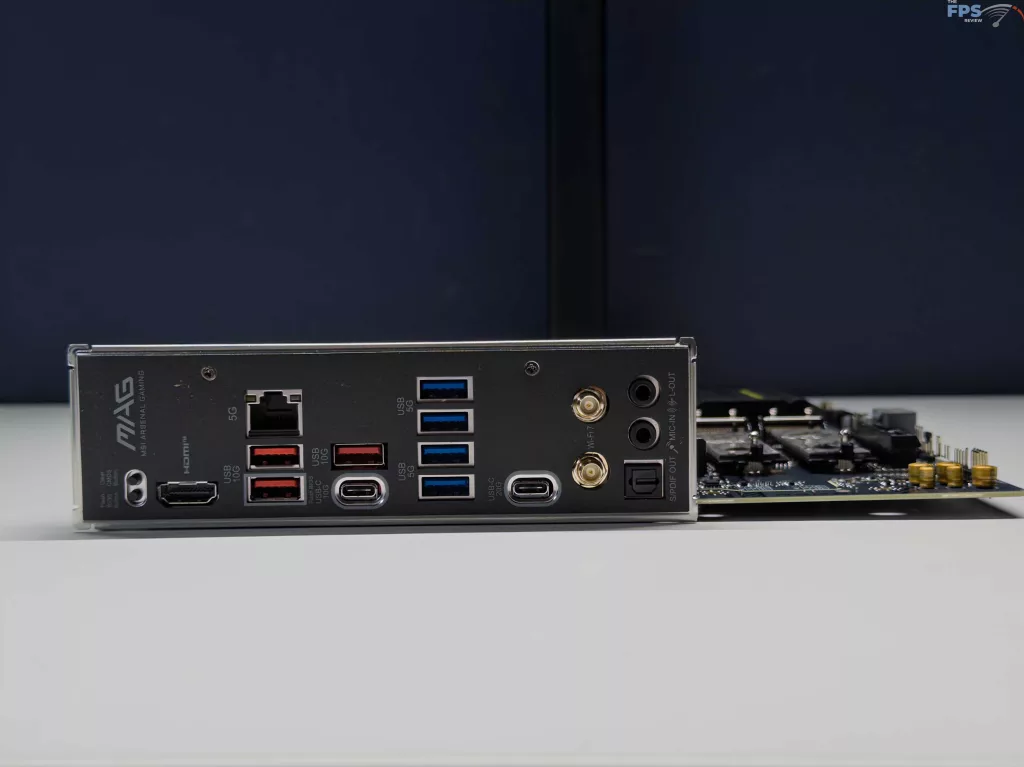
Beyond the USB connection options, there is a single 5 Gbps LAN port provided by a Realtek 8126-VB chipset, two (2) antenna ports for the Wi-Fi card. While we couldn’t determine the exact card used by MSI, we do know it provides the user with Wi-Fi 7, along with Bluetooth 5.4 and MU-MIMO support. Following this, the user will have the ability to connect a monitor directly to the motherboard with the HDMI port, and Audio to either the S/PDIF connector or the Line-out & Mic-in jacks for up to 7.1 channel surround sound powered by a Realtek ALC4080 codec. Lastly, you have both a Clear CMOS button for resetting your BIOS when something goes wrong and a Flash BIOS button to allow for a BIOS update when you have nothing installed in the motherboard.
The last connectors that we have not mentioned yet are the six (6) total 4-pin fan connectors, with one (1) dedicated to a CPU fan, one (1) combo for either a fan or a pump, and four (4) more for system fans. After this, there are a total of three (3) Addressable V2 RGB LED connectors, and a single (1) RGB LED connector for all the internal LED lighting a user might want. Lastly, MSI has provided their EZ Conn-header and cable to simplify the connection of your front panel buttons to the motherboard itself.
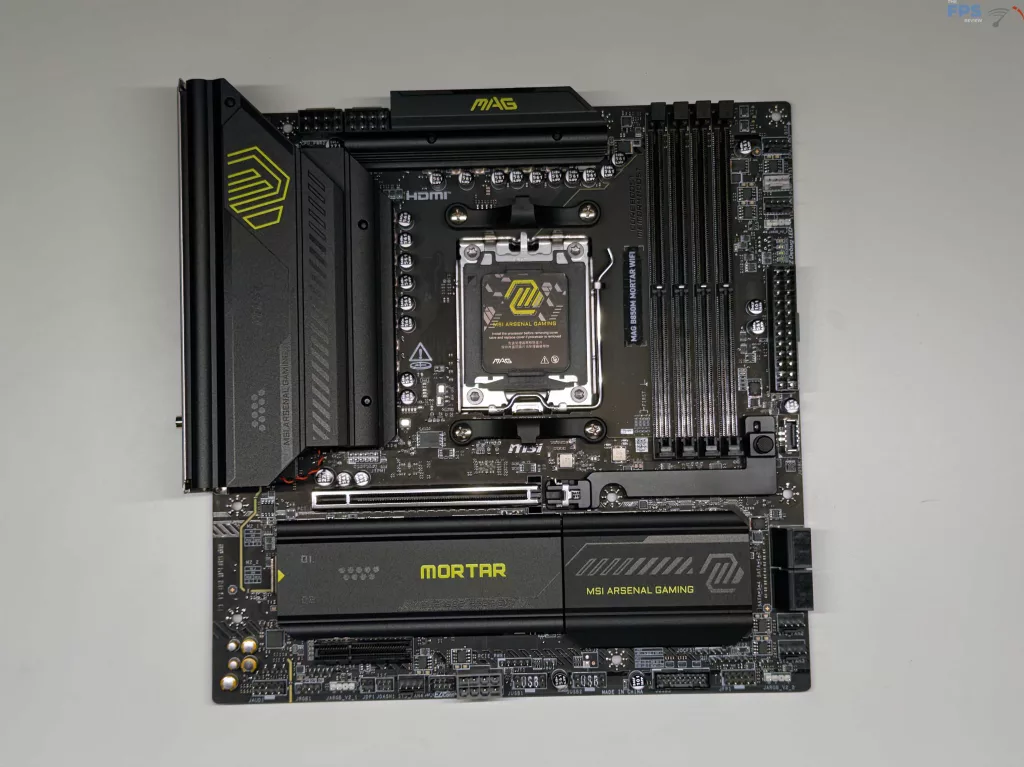
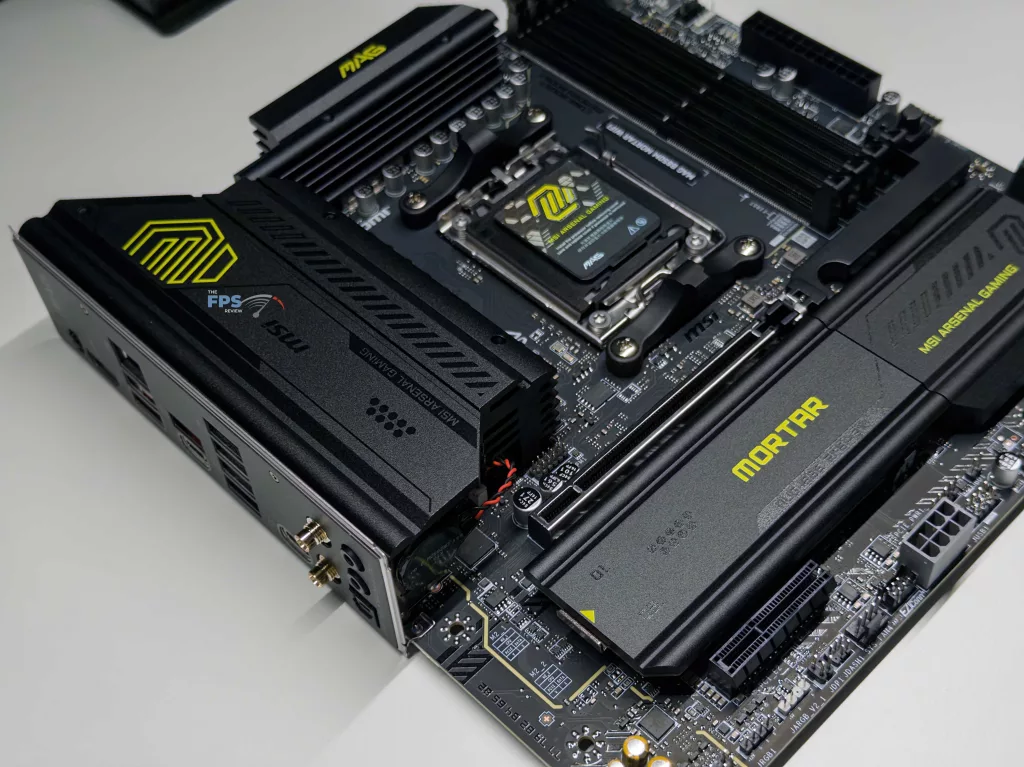
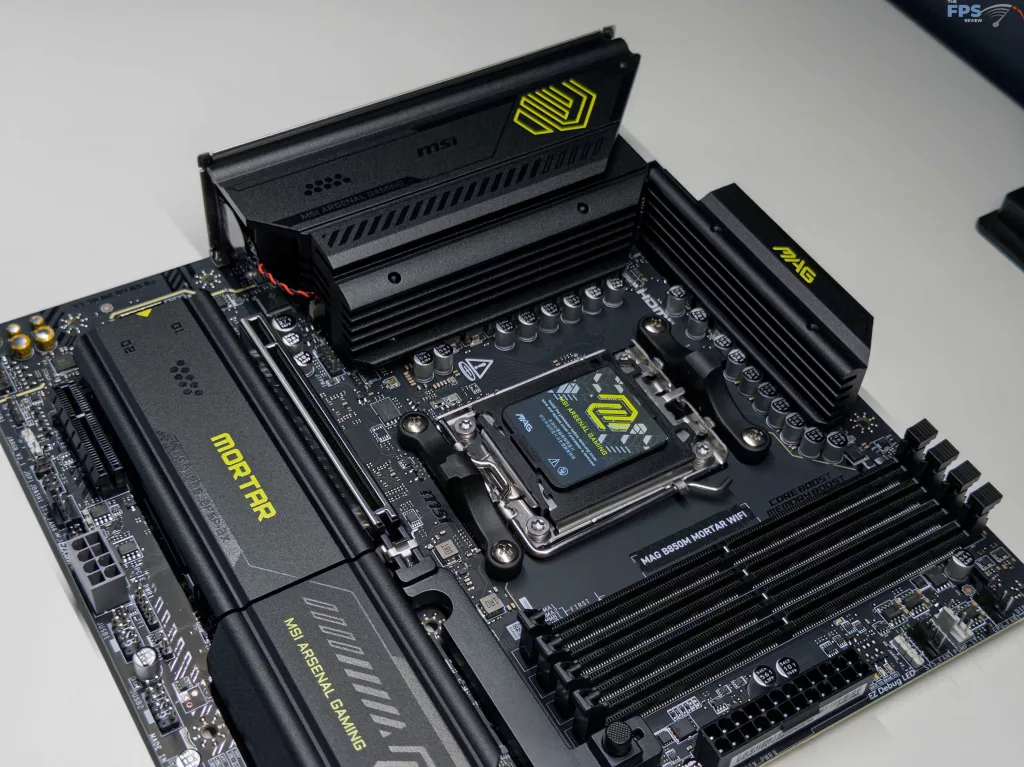
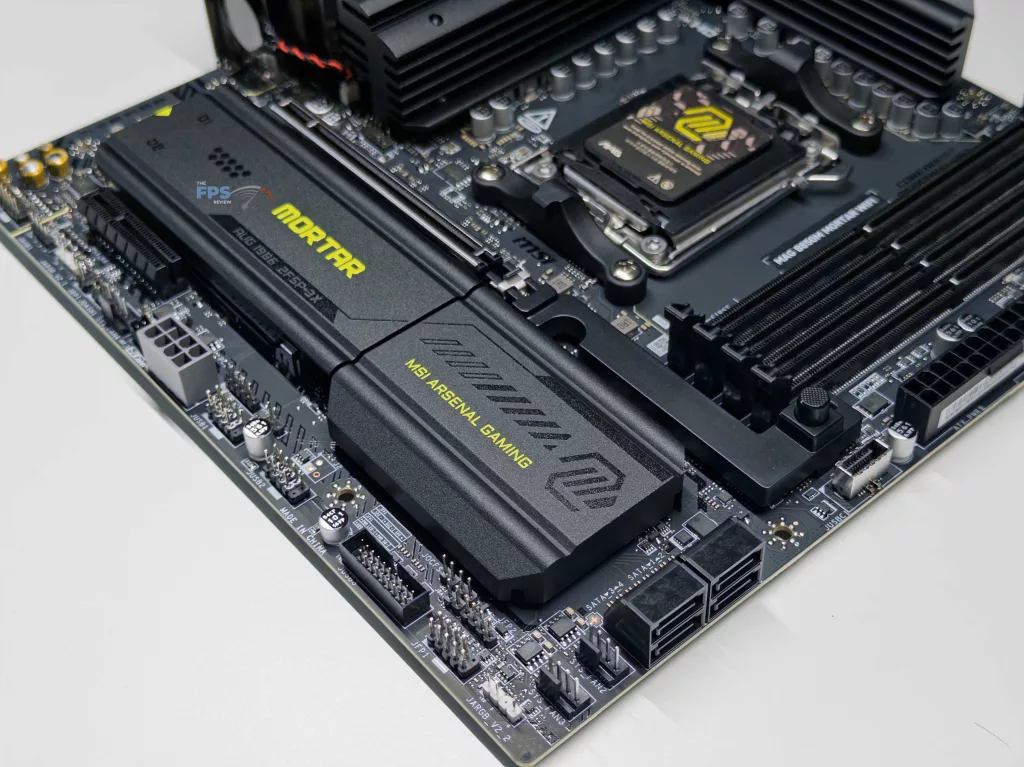
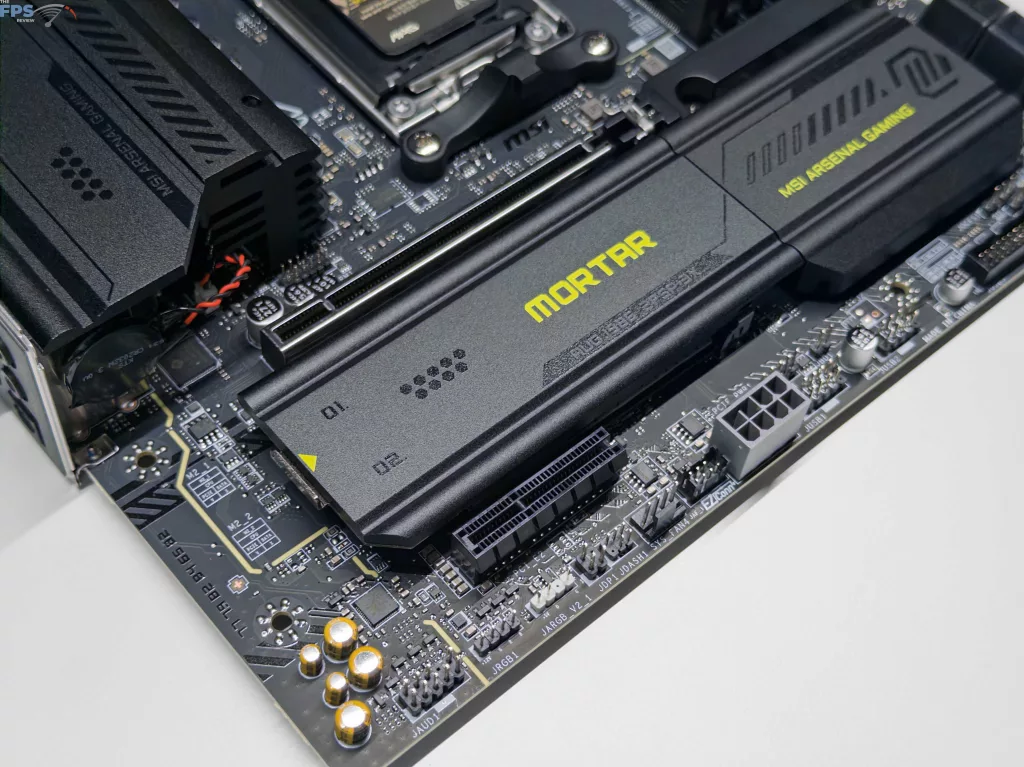
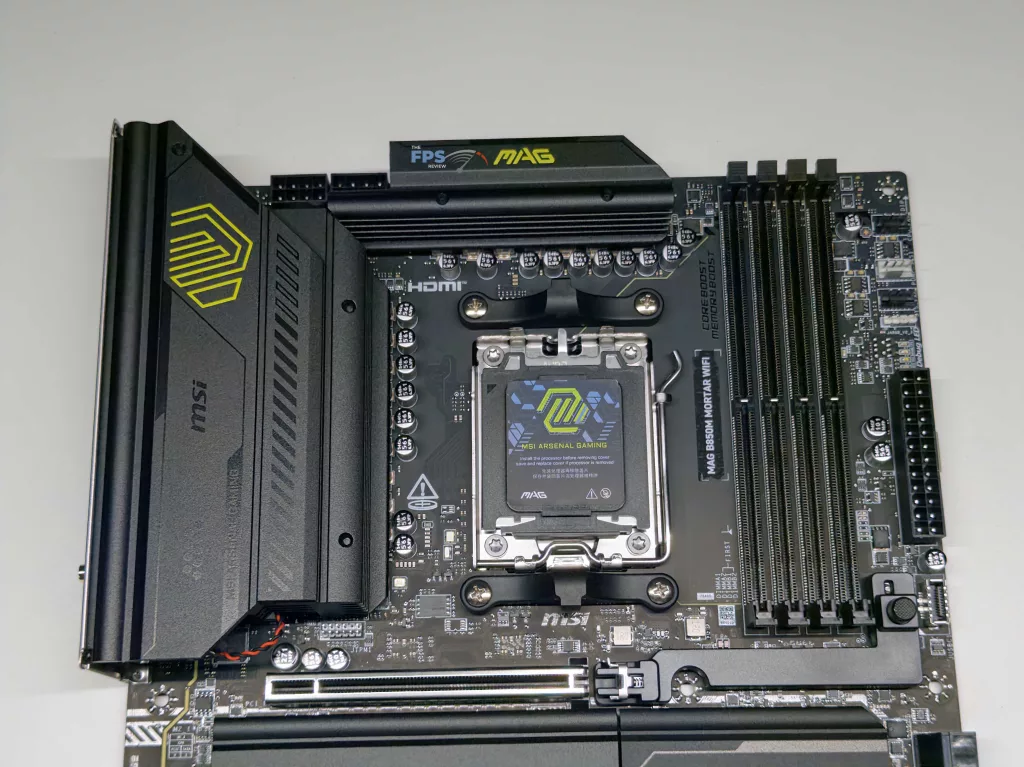


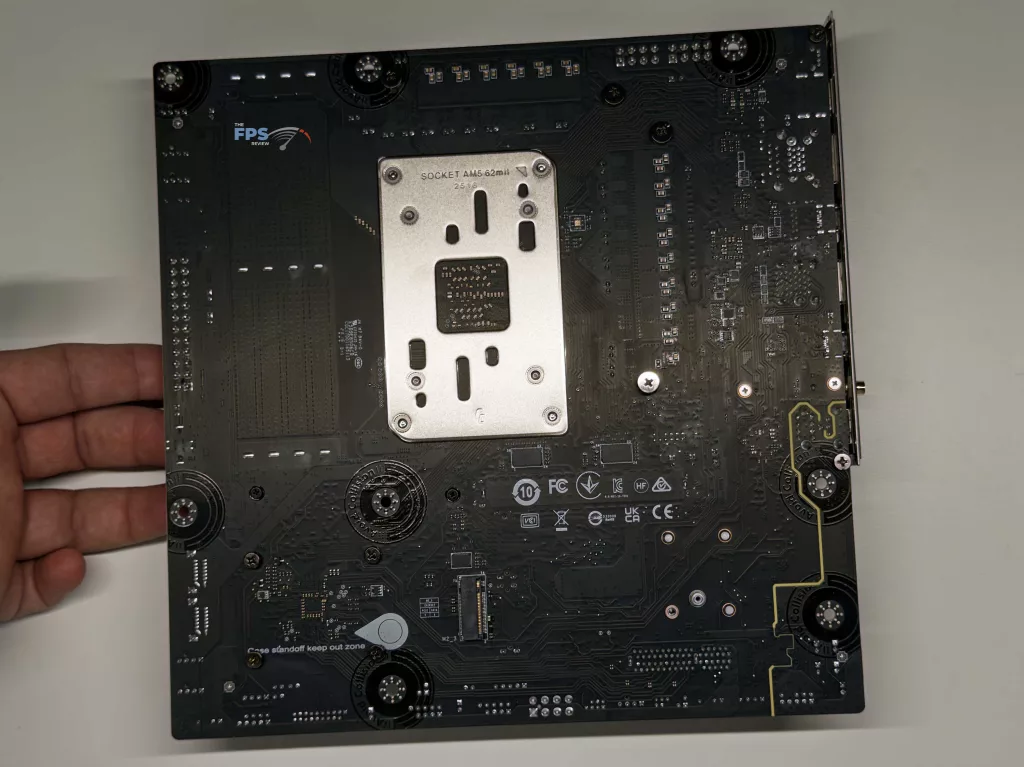
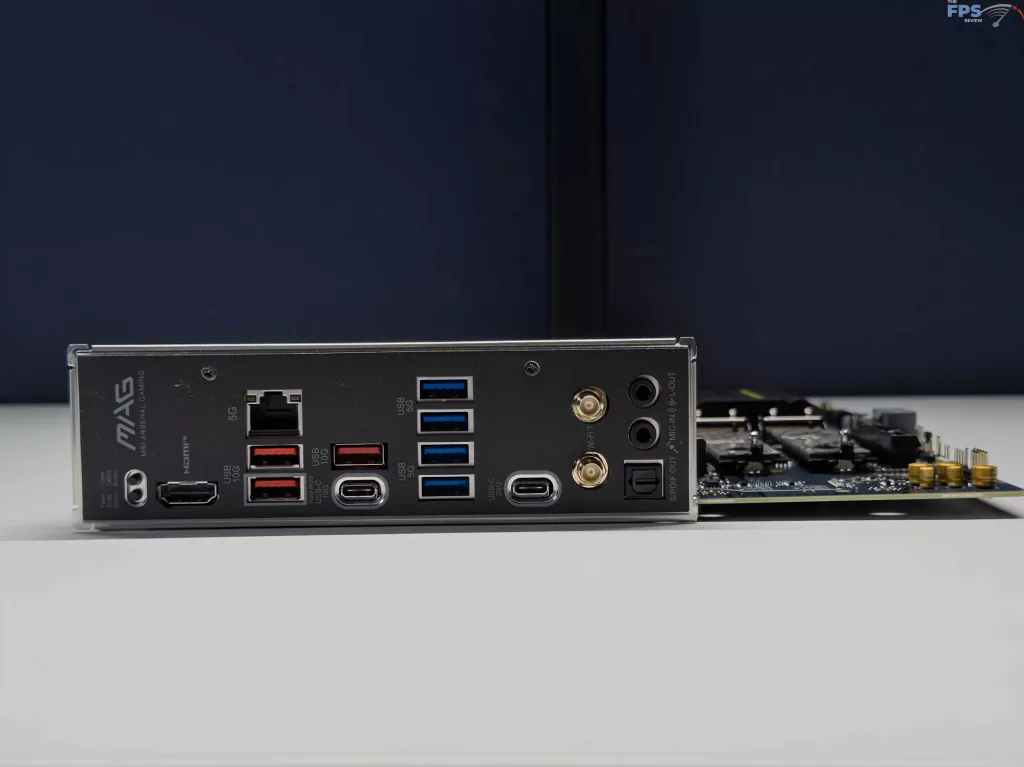
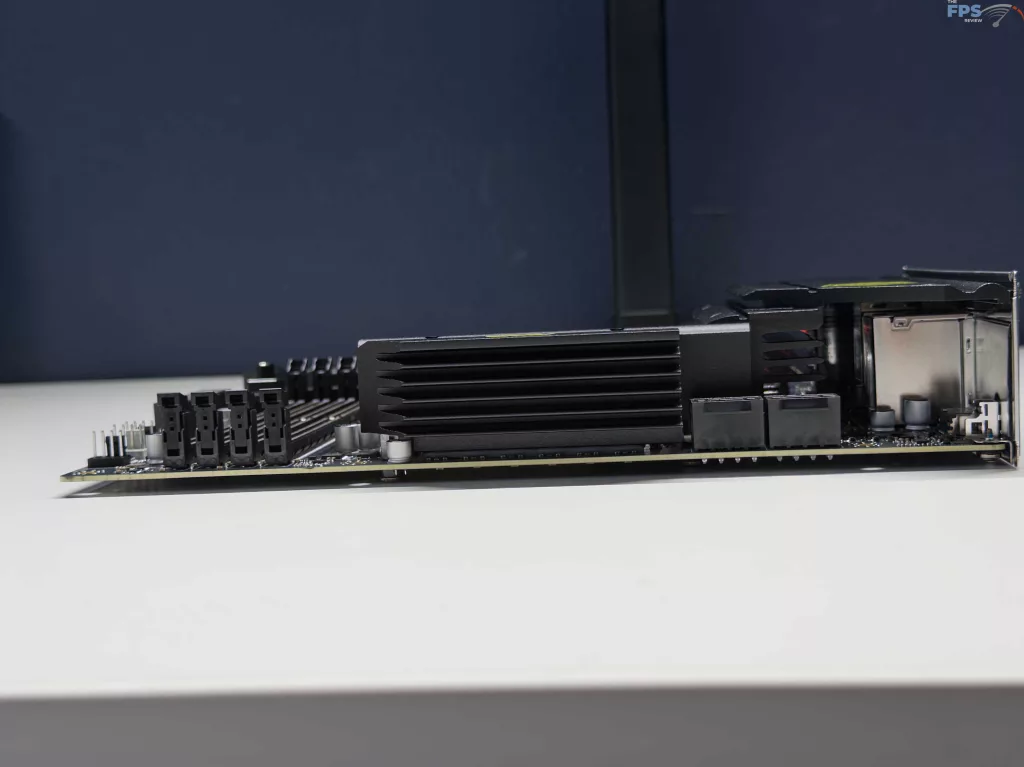
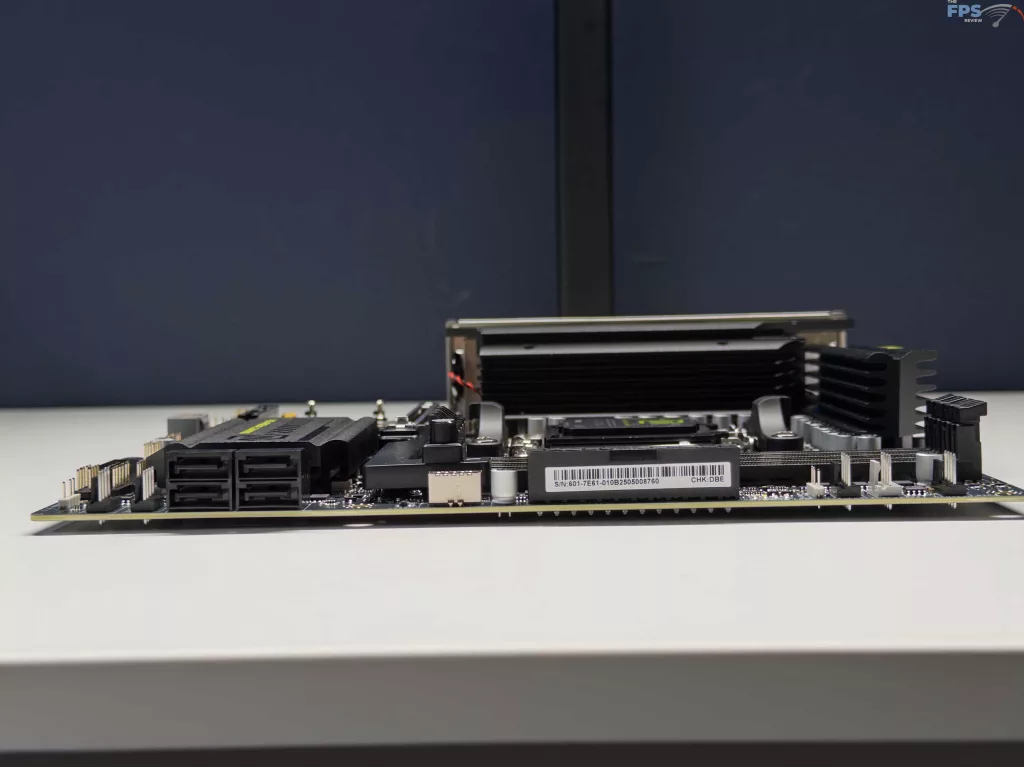
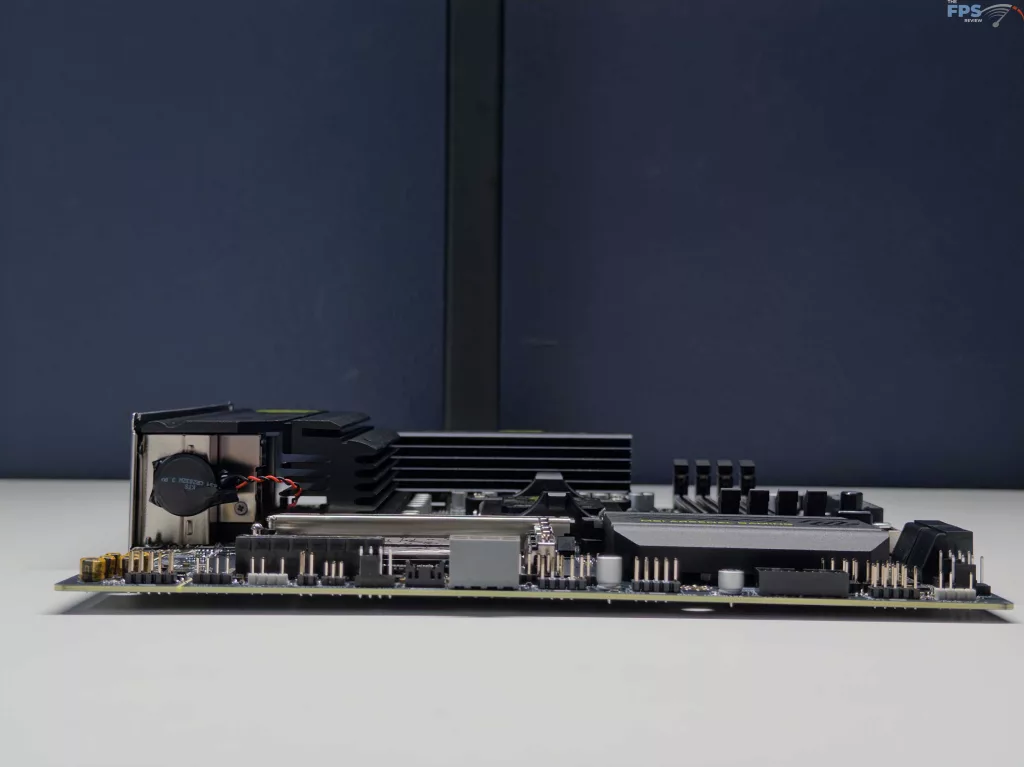
UEFI
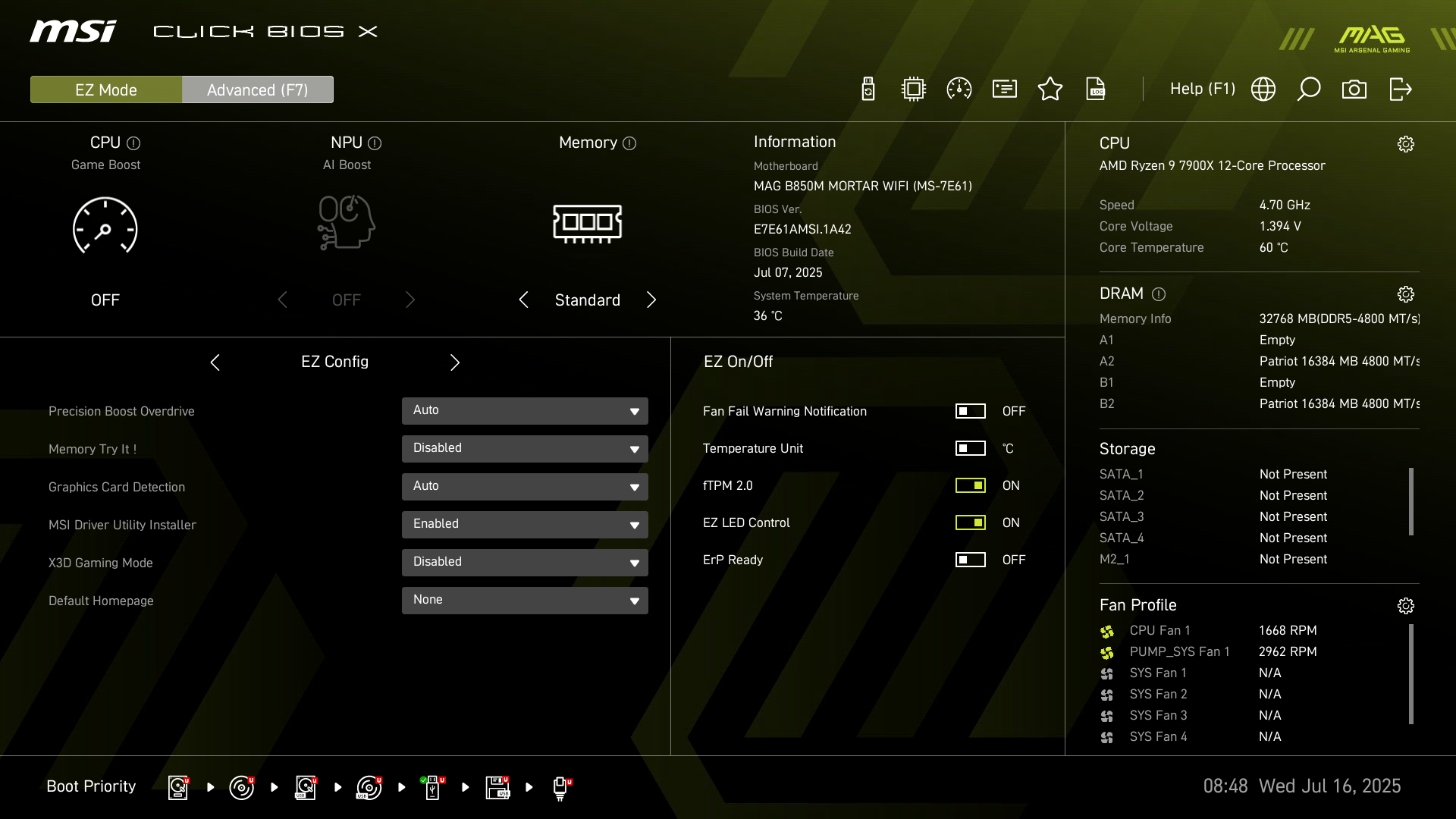
ASRock is using its standard UEFI BIOS with the ASRock B850 LiveMixer WiFi. With this, there are no real deviations beyond the previous generations, or frankly, any other ASRock motherboard we have seen. When you first enter the BIOS, it opens to the Advanced Mode screen, instead of the typical Easy Mode we are used to. Luckily, it is easy to swap between the modes by hitting “F6” on any screen.
Within Easy Mode, you will quickly see information on your system, from your DRAM information to XMP settings, to fan speeds, to quick temperature references, all at a quick glance. Keep in mind that if you are looking to adjust anything further than RAM speeds or your fan speeds, you will need to go into the Advanced Mode.
Once you are in Advanced Mode, you will be able to change essentially any setting you might want to for any reason. We have taken screenshots of most screens and settings available to be adjusted. Take a quick look at the gallery below to see them all.
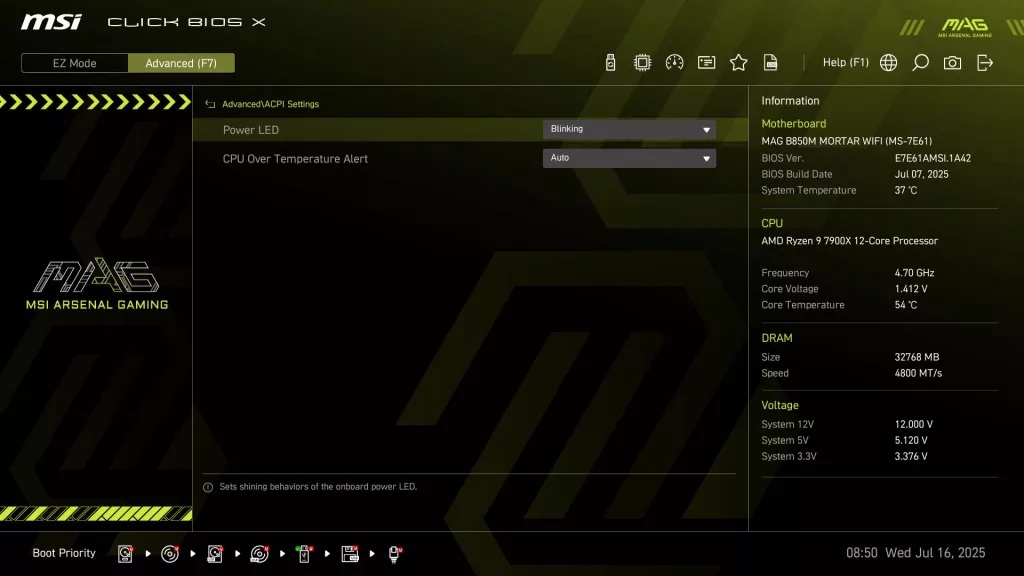


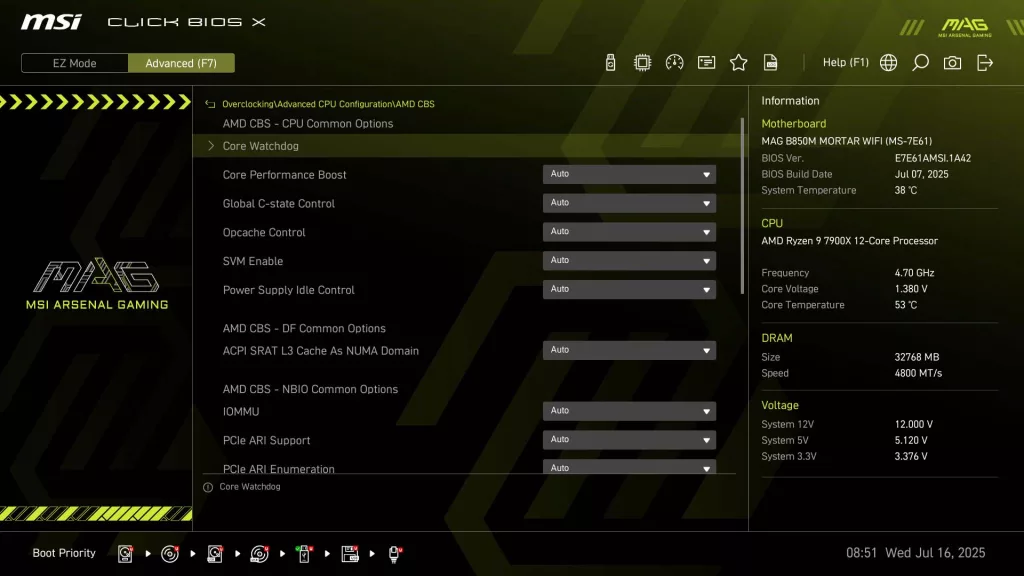
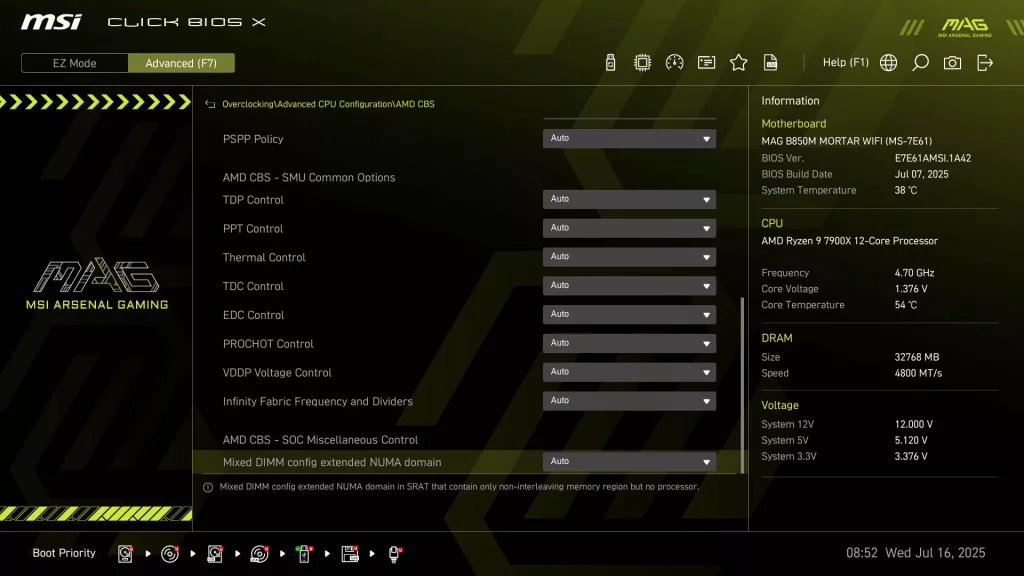
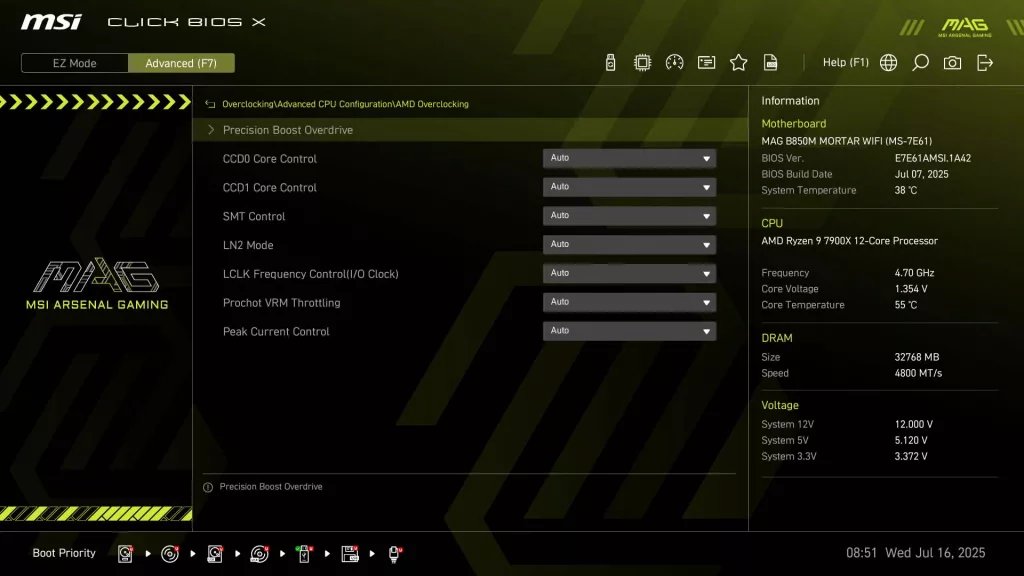
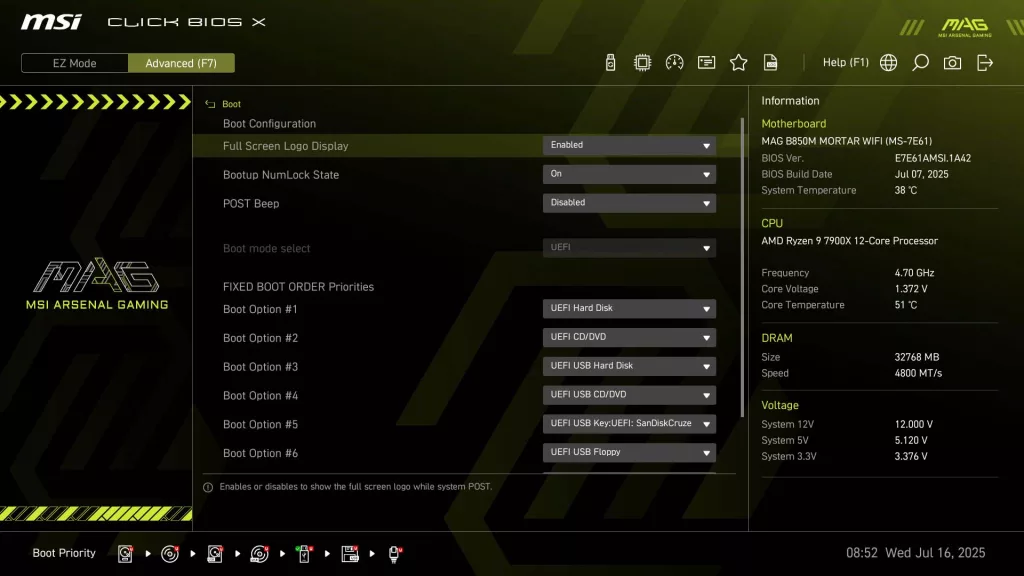
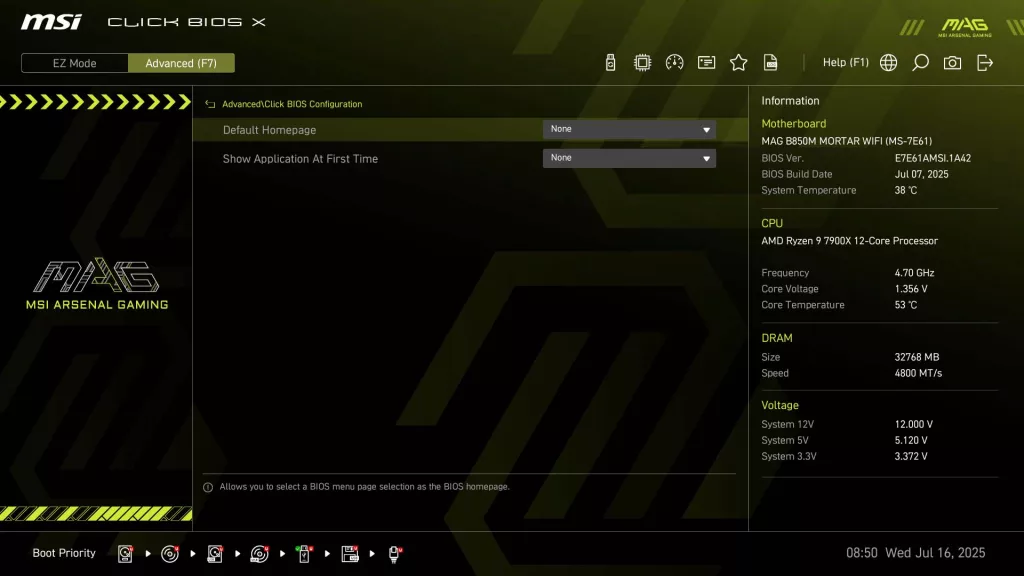

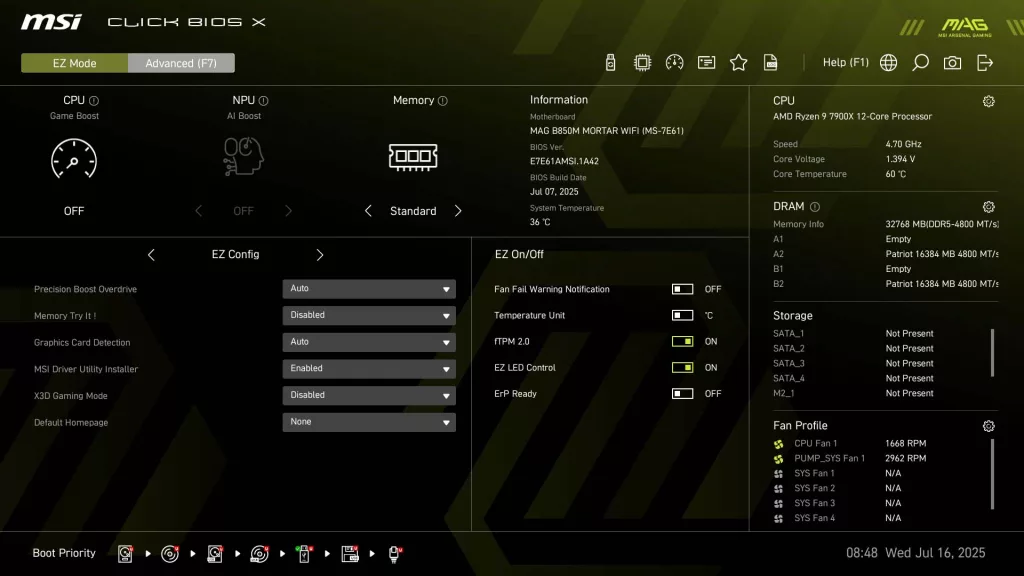
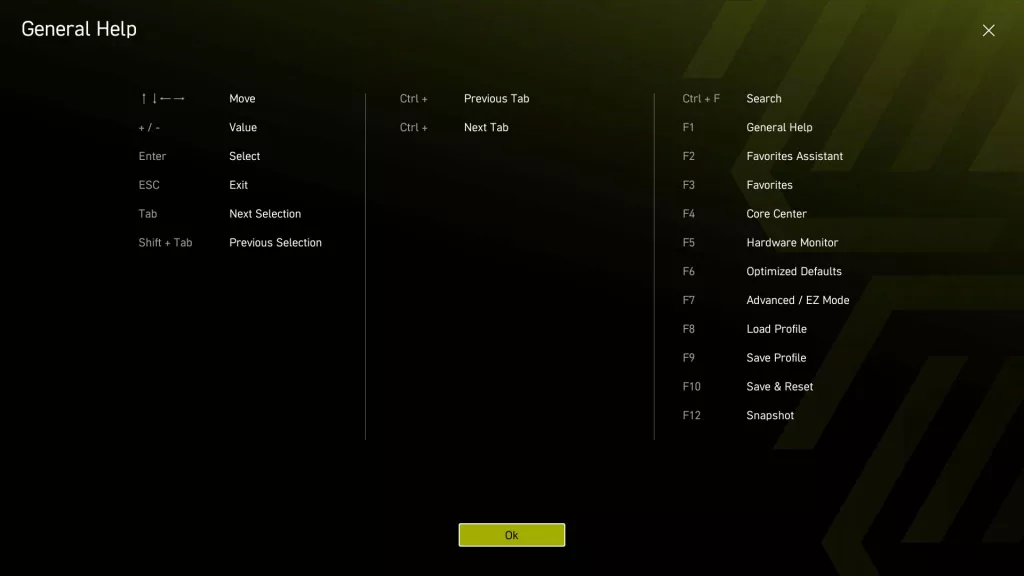
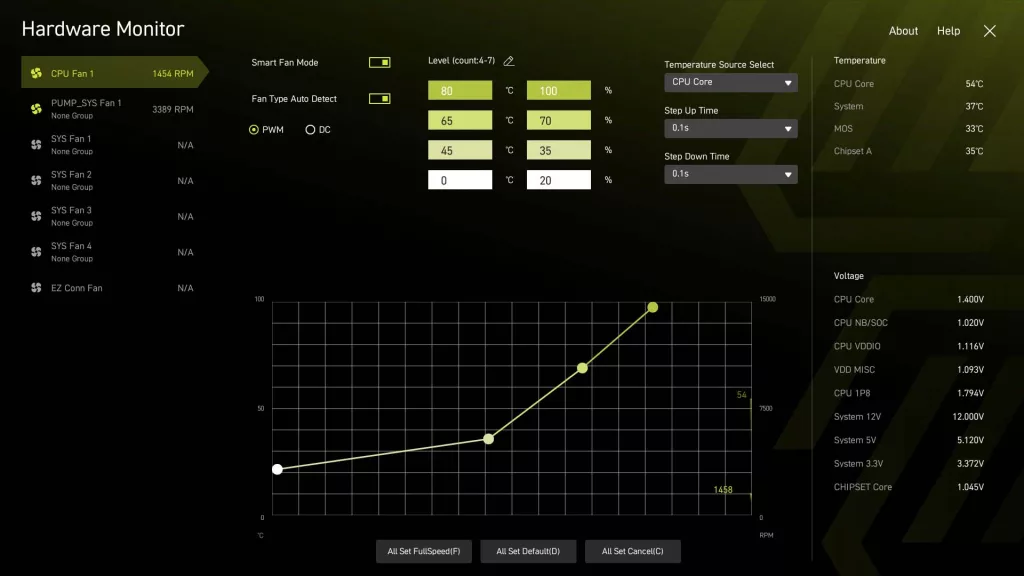
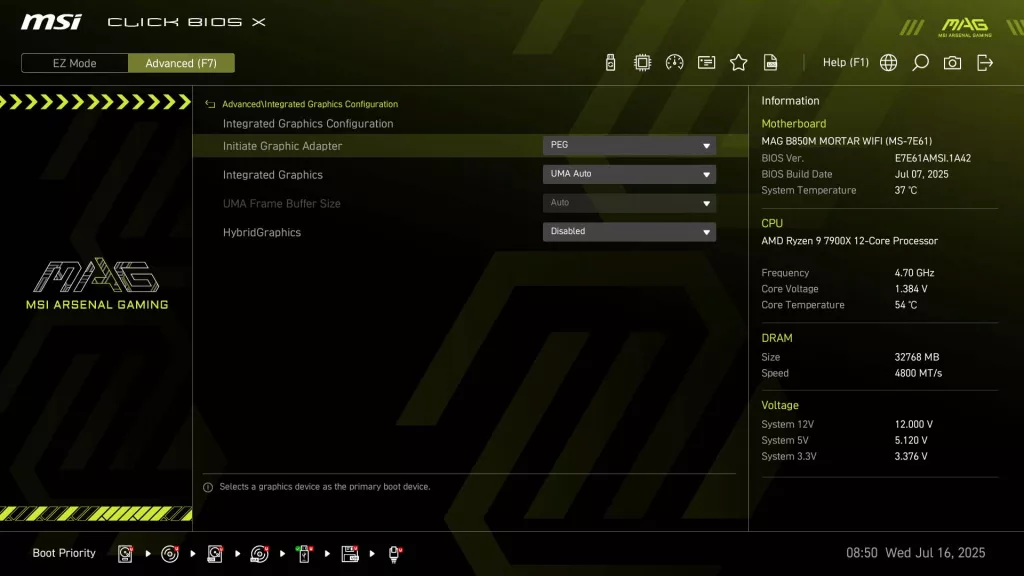
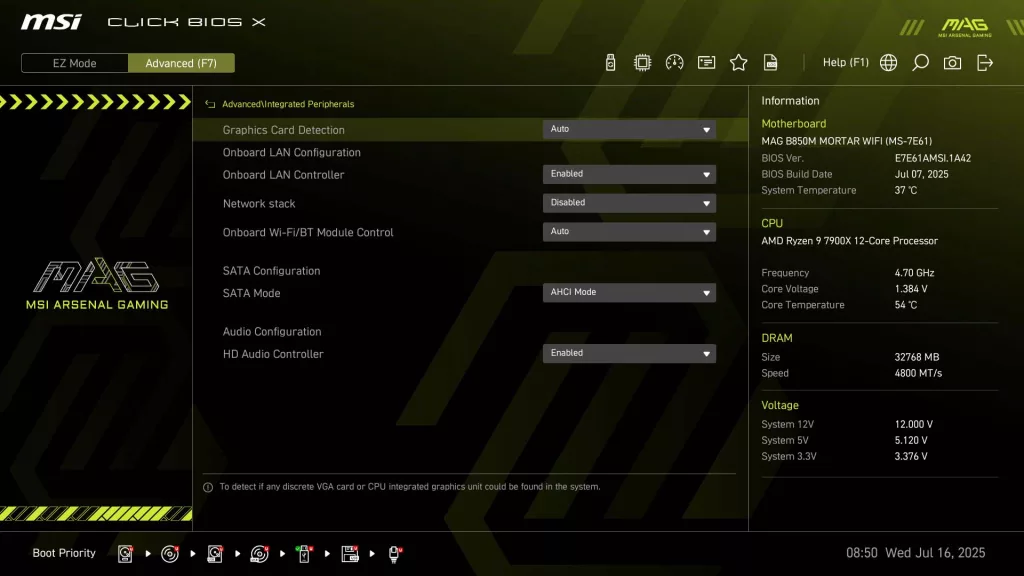
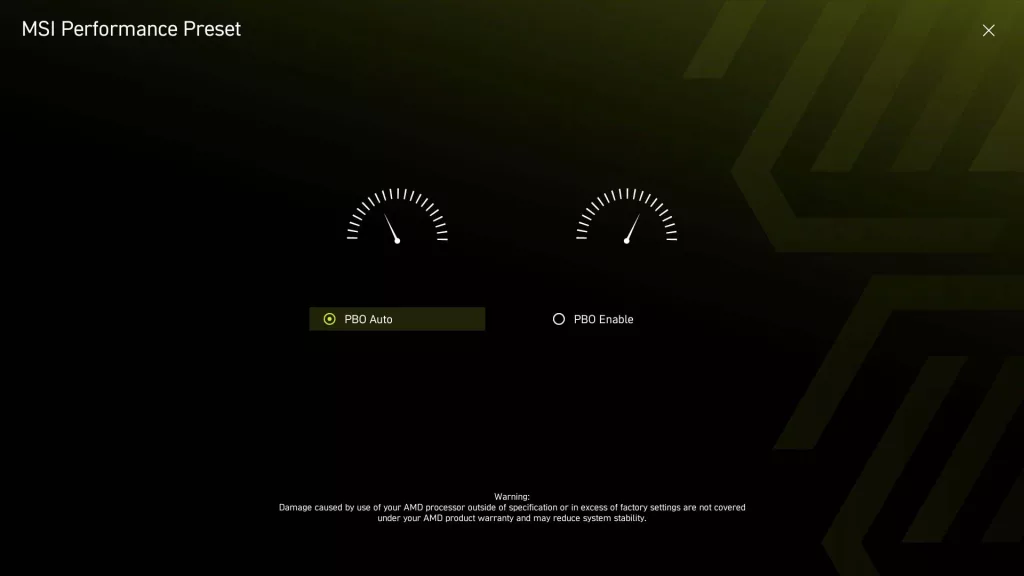
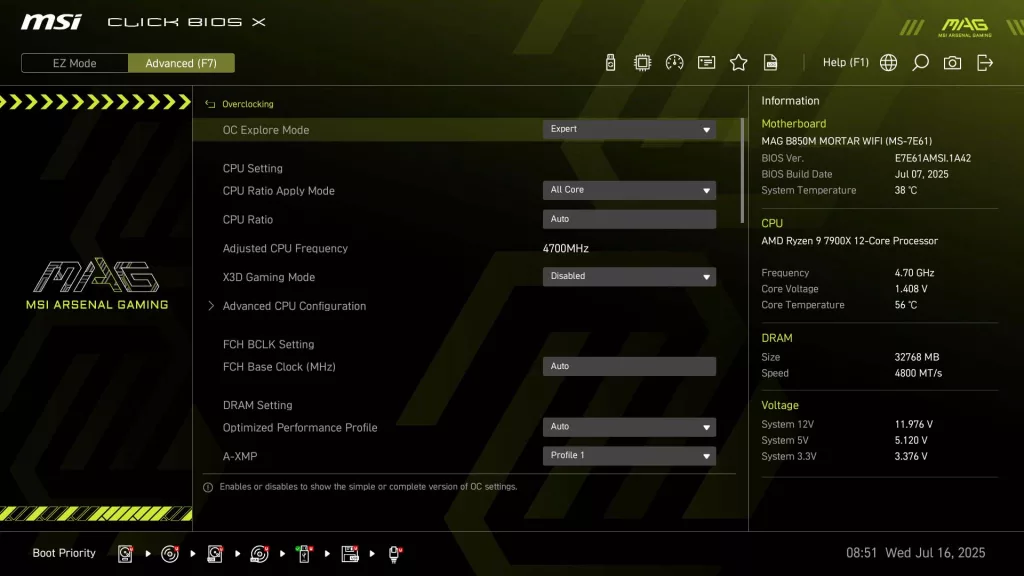

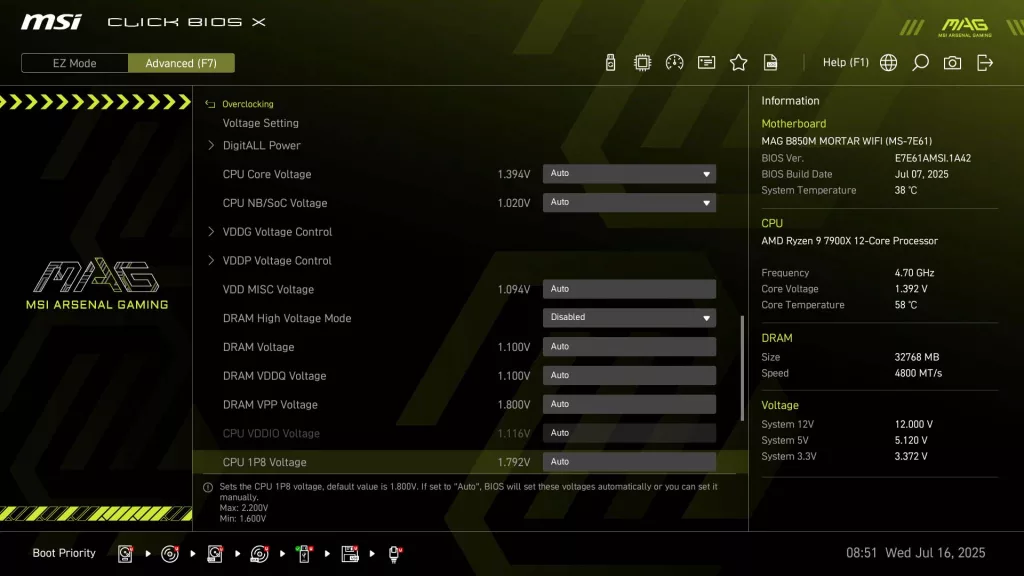
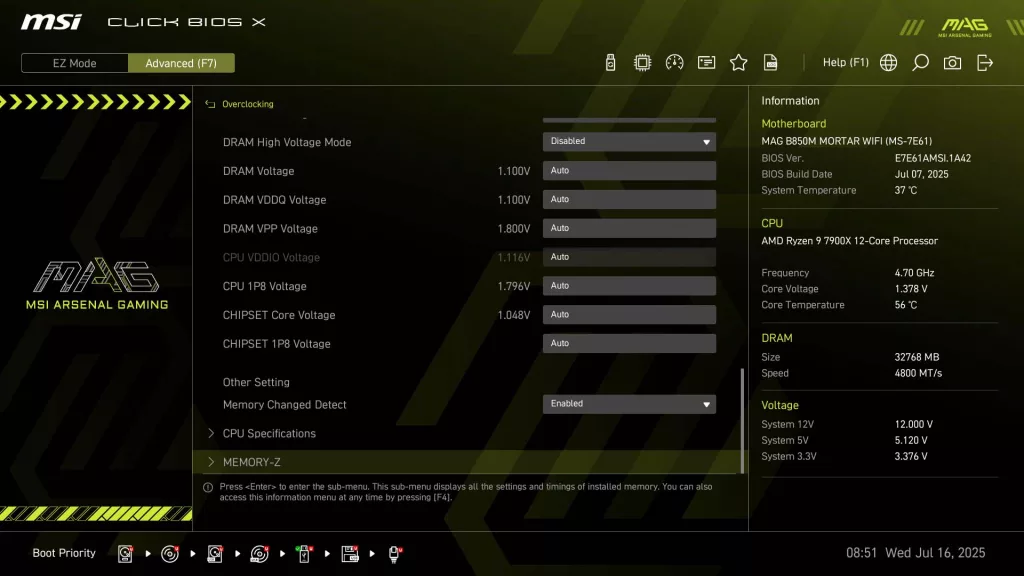
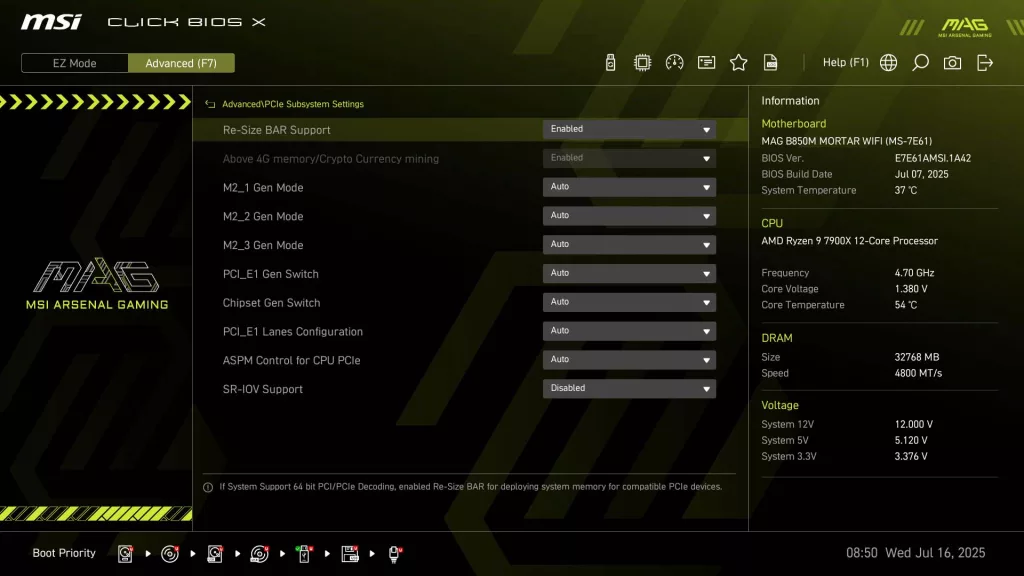

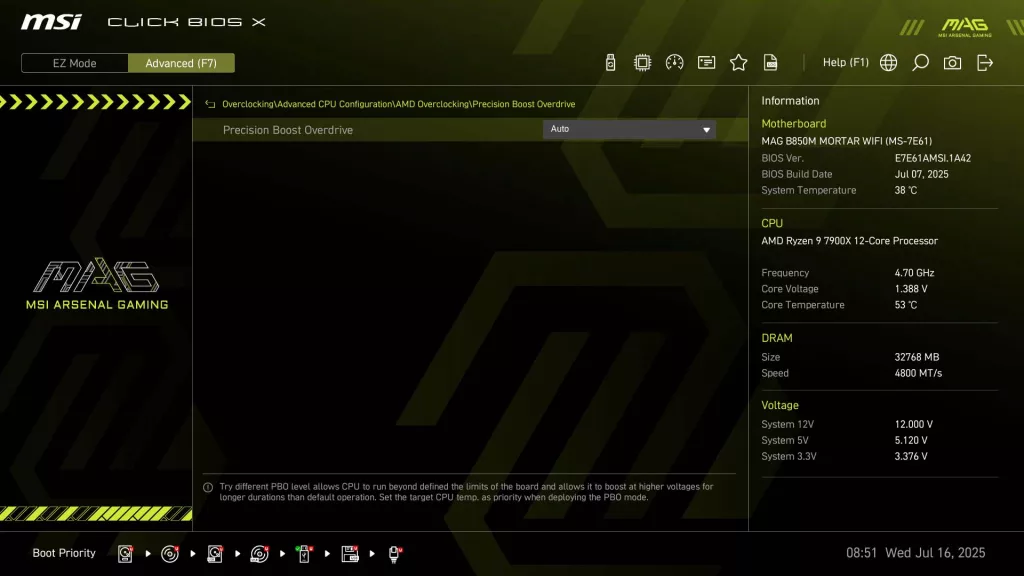
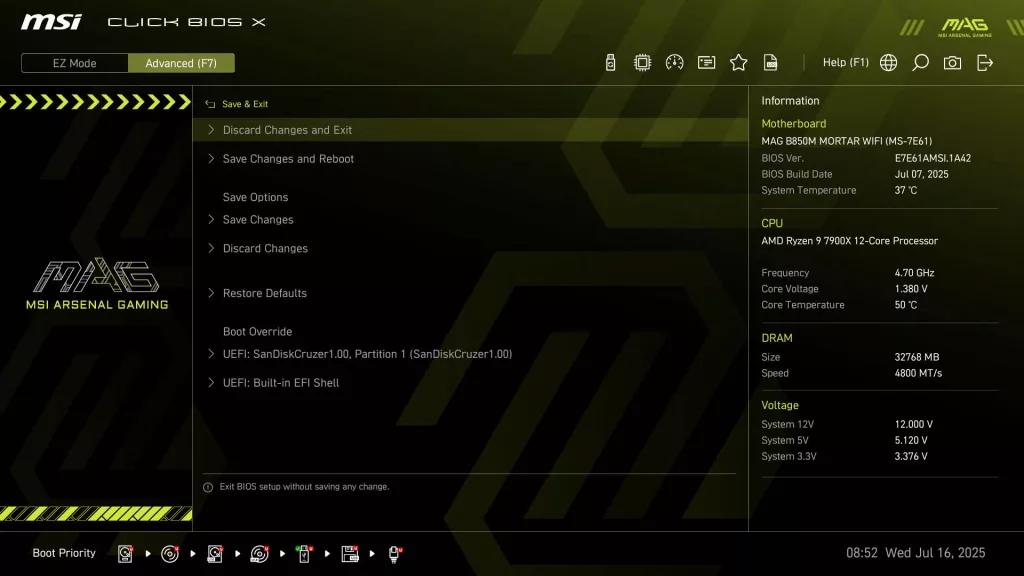
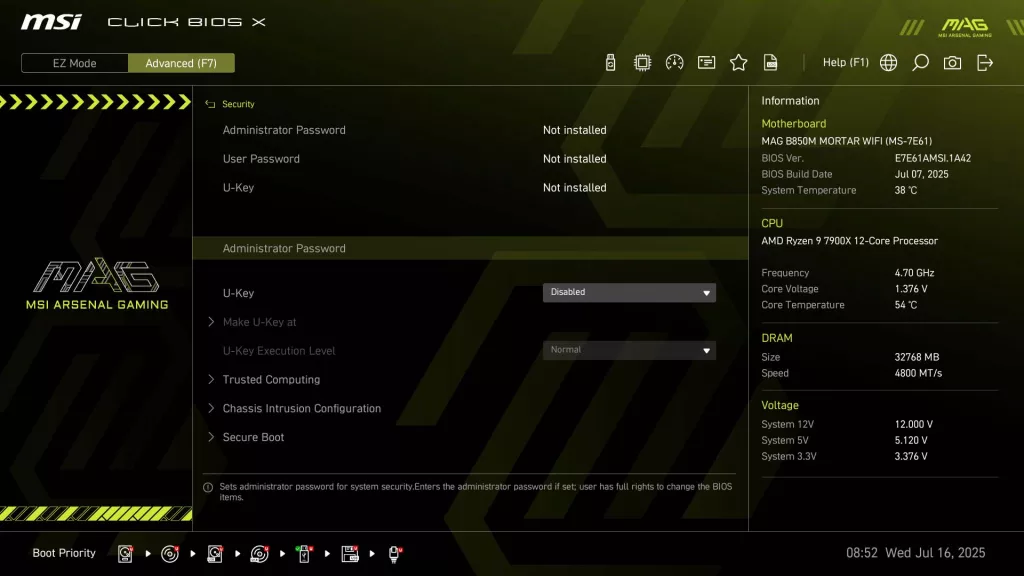
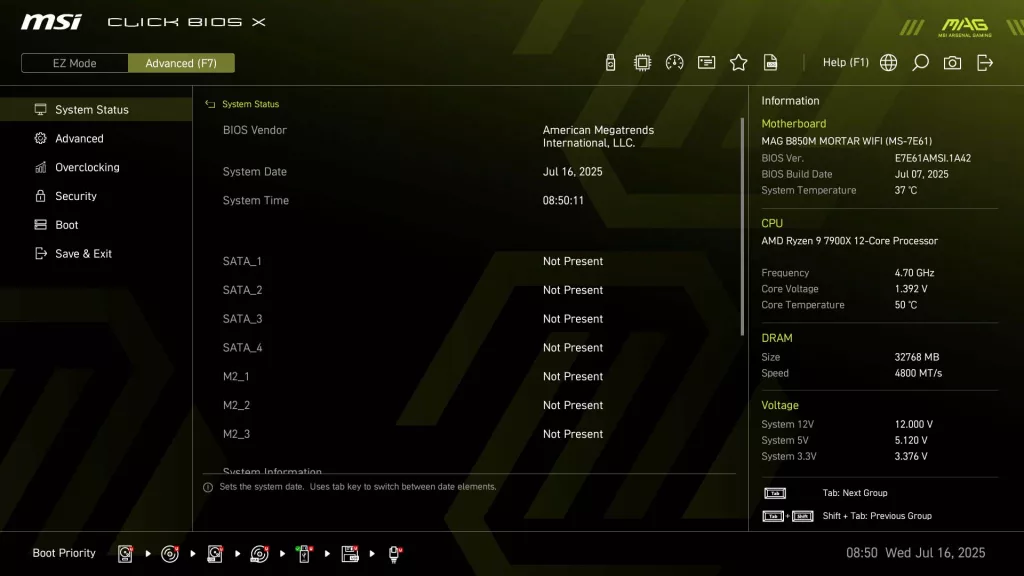
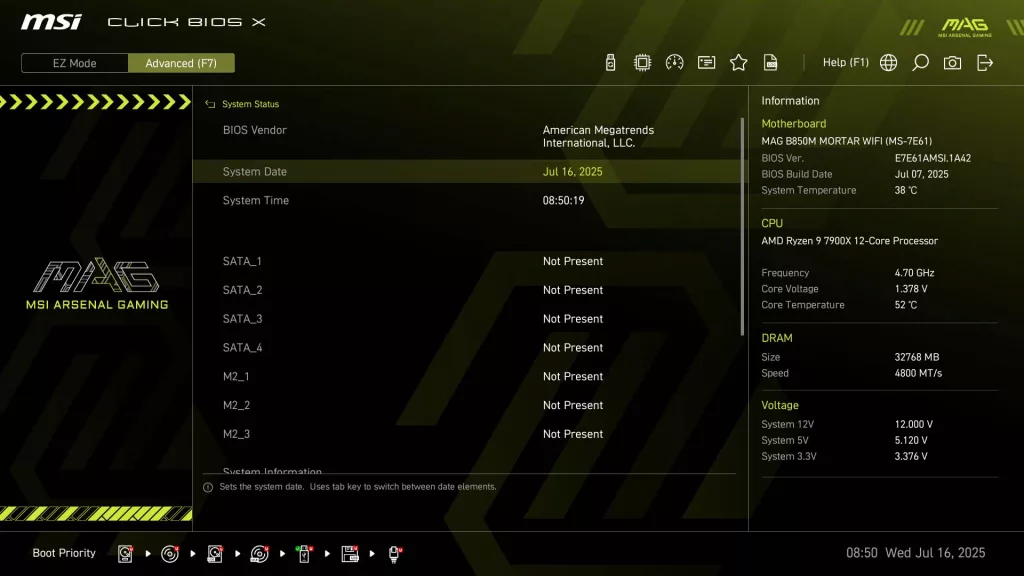
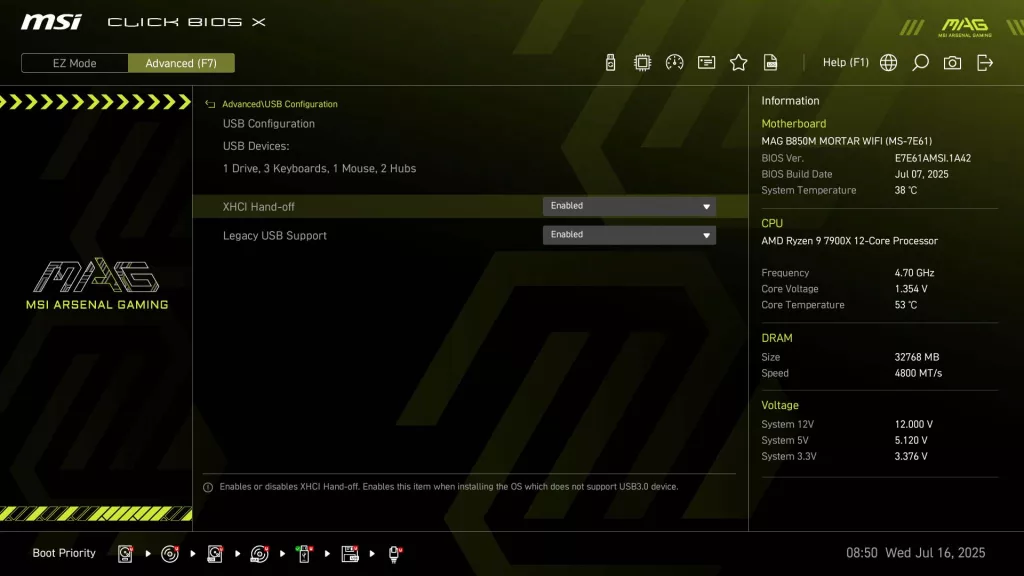
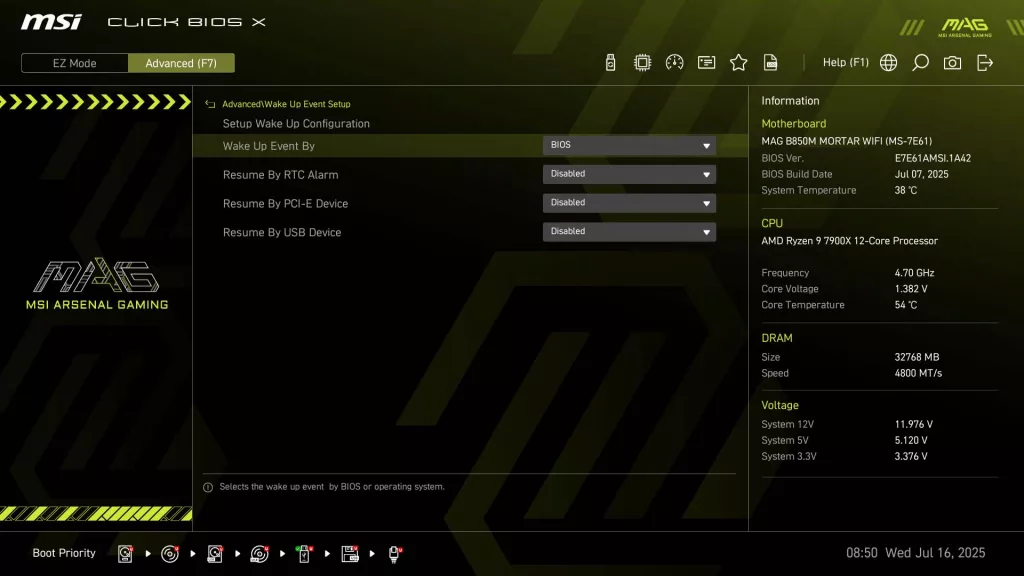
Motherboard Performance
As with all of our recent 2025 reviews, we will be using our new performance section. You will find images of all of our testing results in the gallery, while the following paragraphs summarize what we experienced. As always with our AMD 2025 reviews, we will have the Ryzen 9 7900X as the CPU of choice for testing.
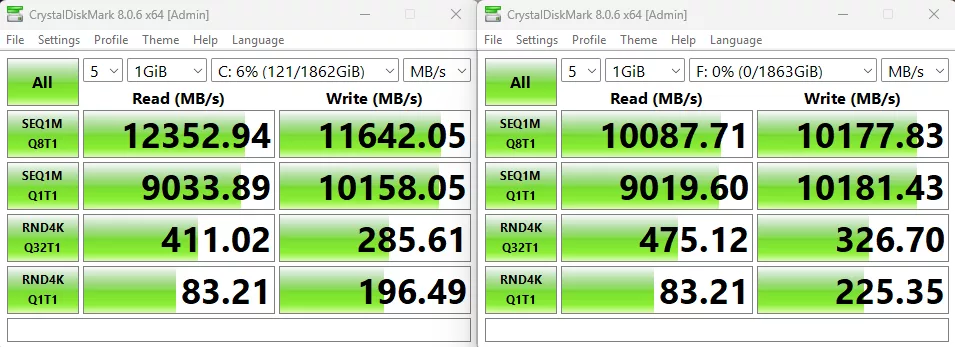
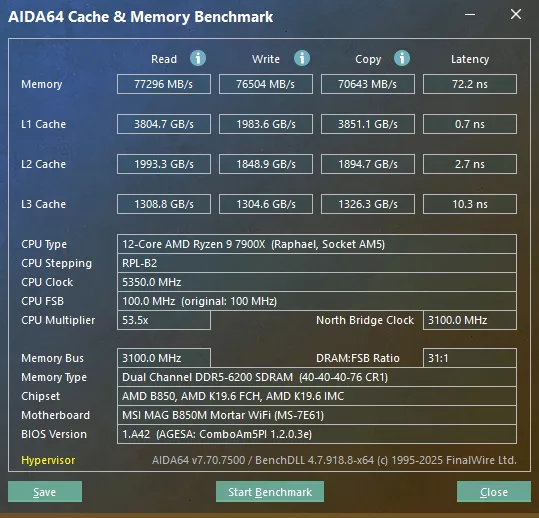

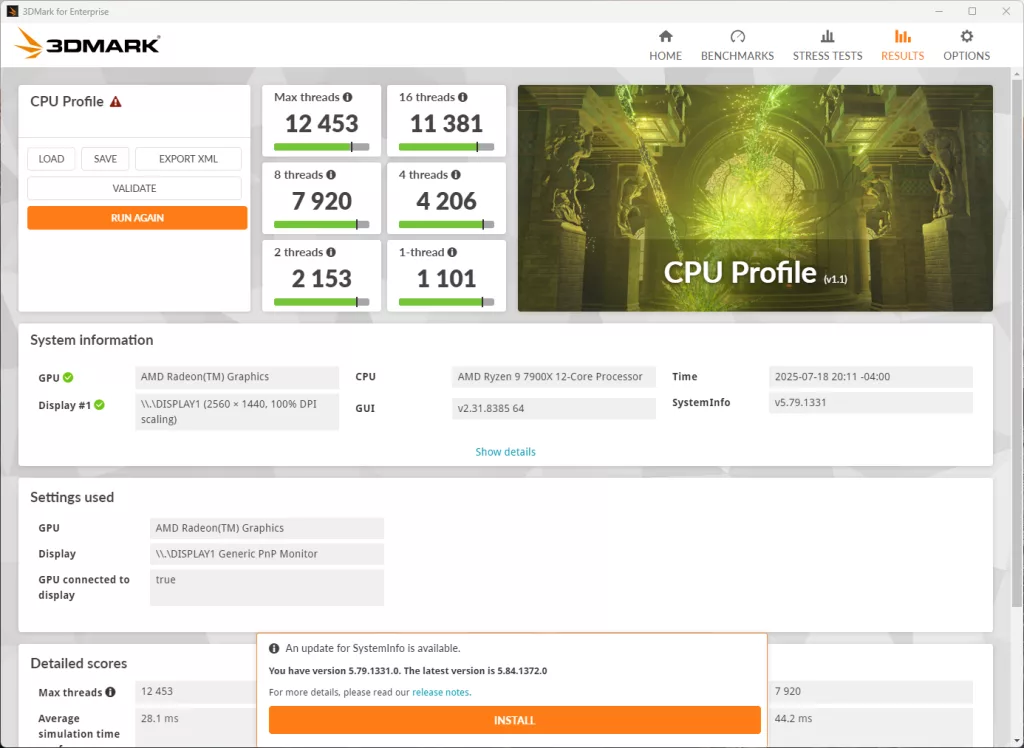
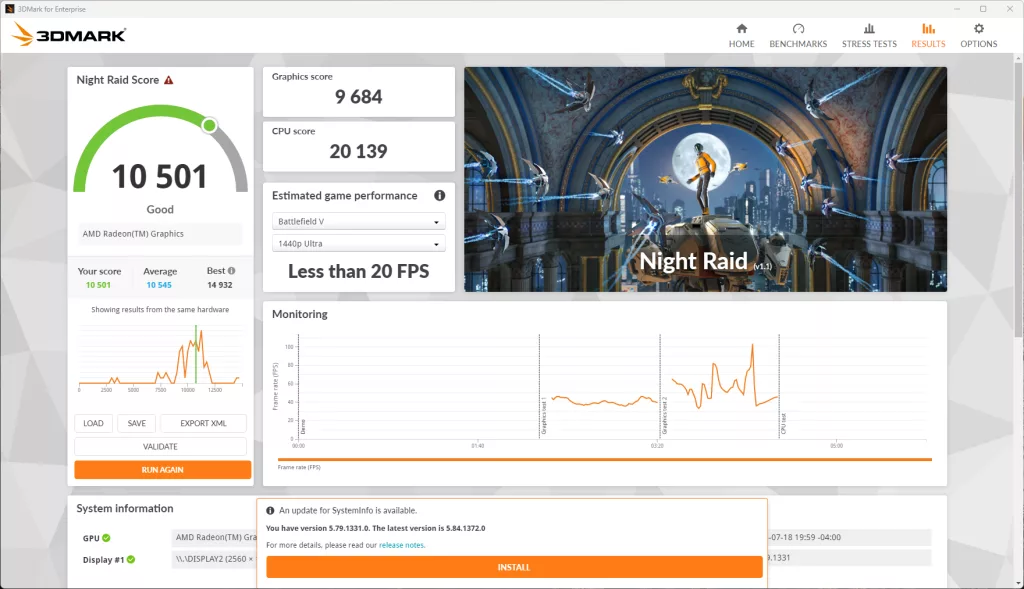
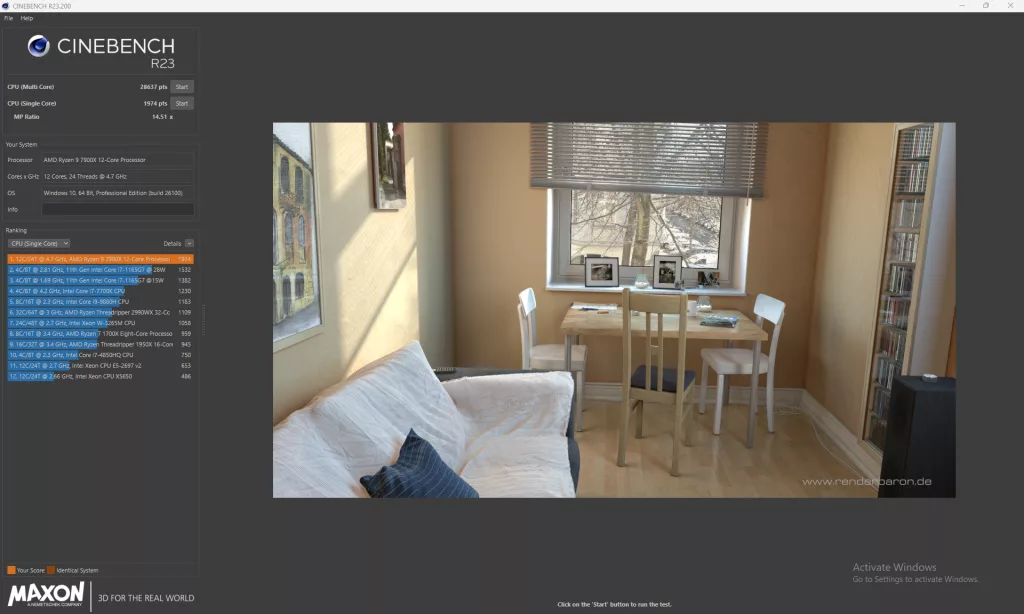
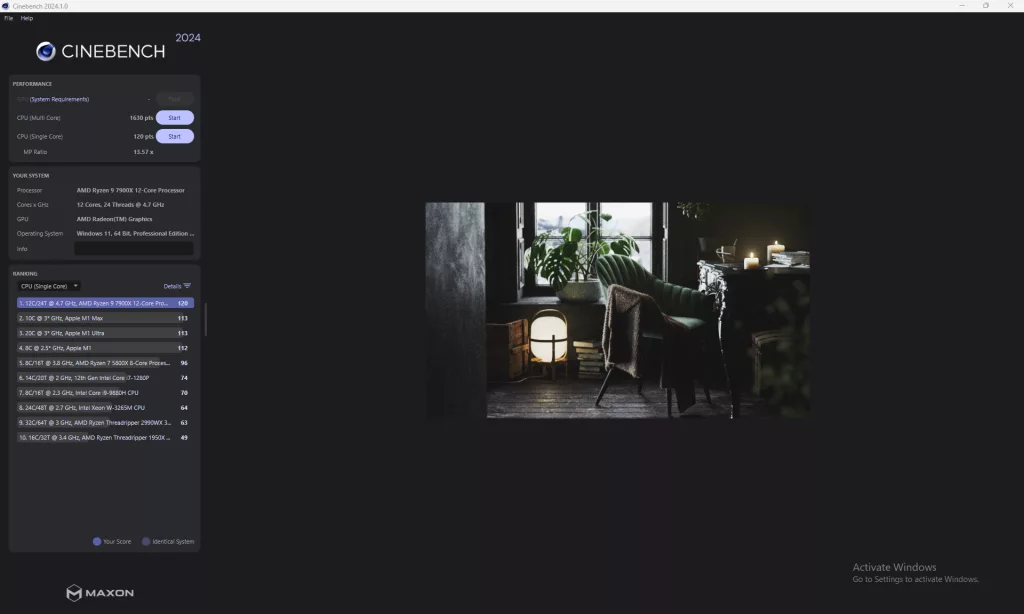
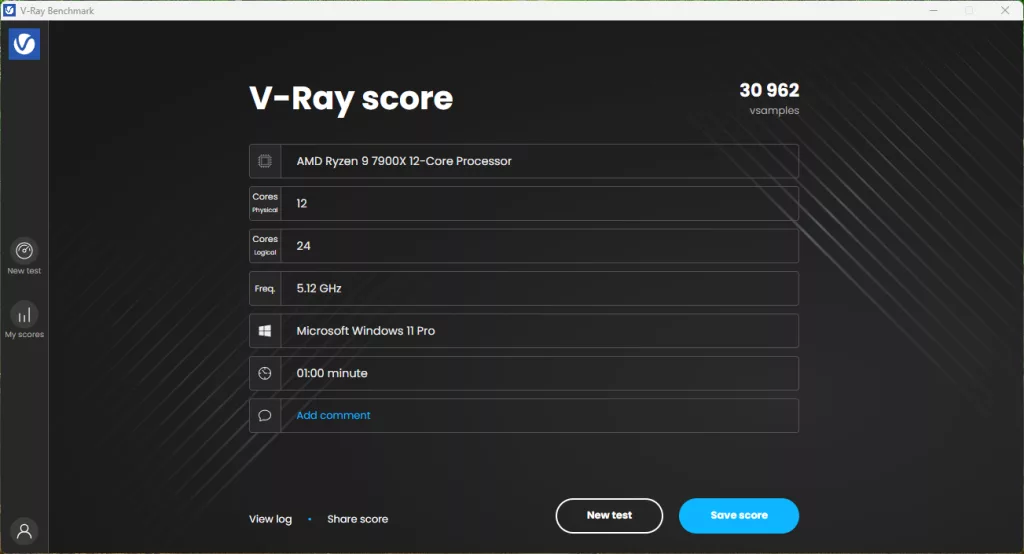
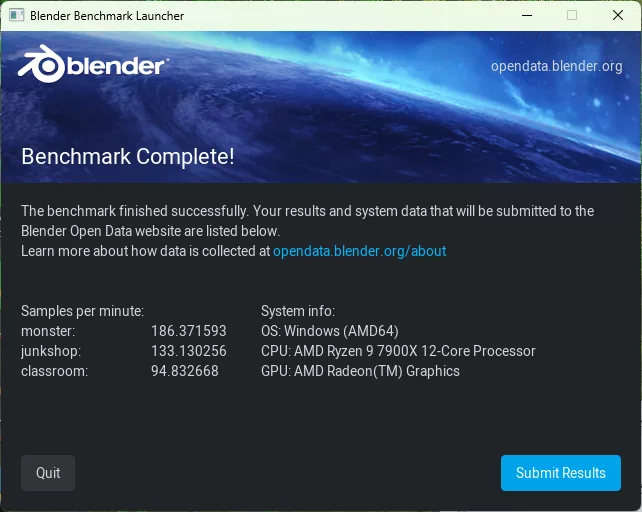
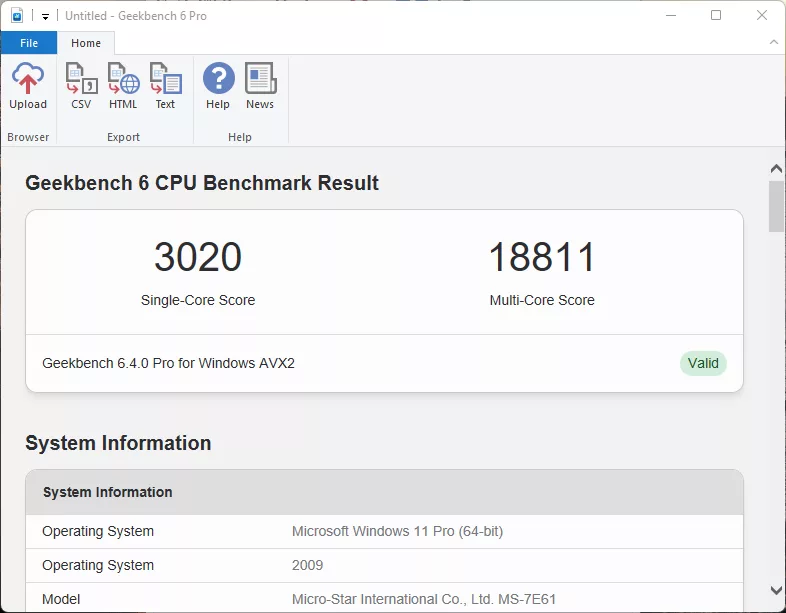
Our first point of testing, like always, is our storage test, and we are back to using our MSI SPATIUM M570 PRO FROZR (originally reviewed at the end of 2023) as our primary drive, and our trusty ADATA LEGEND 970 2TB NVME SSE as our secondary drive. As normal, we ran both drives simultaneously in CrystalDiskMark with the 1GiB profile. With the third M.2 NVMe slot being on the rear of the board, we are unable to test it with any of the drives we have on hand, and as such only have a single data point here. The M570 was able to achieve 12,353 MB/s read and 11,642 MB/s write speeds, while the LEGEND 970 we were able to see a read speed of 10,088 MB/s and a write speed of 10,178 MB/s. Both of these are in line with what we have come to expect from these drives.
Next is our memory testing using AIDA64’s Cache & Memory Benchmark. With the MSI MAG B850M MORTAR WIFI, our Patriot memory kit was able to achieve a Memory Read Speed of 77,296 MB/s, a Write Speed of 76,504 MB/s, and a Copy Speed of 70,643 MB/s. These are all right in line with our expectations for this memory kit with the Ryzen 9 7900X CPU.
The synthetic benchmarks are next up, with PCMark, 3Dmark, Cinebench (R23 and 2024), V-Ray, Blender, and finally GeekBench6. PCMark continues the B850 trend we have seen with lower-than-expected scores, where we are coming in at 6,981, which is around 2,000 points lower than the X870E motherboards we have tested. 3DMark brings us back in line with our expected points, with the CPU Profile Max Thread score coming in at 12,453, and Night Raid scored 20,139 for its CPU score.
Both Cinebench tests are right around where we expect it to be, with R23 scoring 28,637 points in Multi-Core, and 1,974 points in Single-Core testing. The more recent Cinebench 2024 comes in at 1,630 points for Multi-Core, and 120 points for Single-Core. V-Ray testing is again in line with what is expected at 30,962 vsamples. Blender had a score of 186.37 for monster, 133.13 for junkshop, and 94.83 for classroom scenes. The final test we have run is GeekBench 6 Pro, where we scored 3,020 for Single-Core, and 18,811 for Multi-Core, which is right in line with our historical values.
VRM Temperature
The last testing we completed on the MSI MAG B850M MORTAR WIFI is the VRM temperature test. For this test, we run Cinebench 2023 Multi-Core test for a minimum of 15 minutes to fully stress the system. At the 15-minute mark, we take a screenshot and record the temperatures as reported by the most current version of HWiNFO 64, as well as a manual temperature reading with a Handheld Infrared thermometer. All testing occurs at an ambient temperature of approximately 75°F (24°C).
The Extended FROZR heatsink on the MSI MAG B850M MORTAR WIFI worked as well as we hoped. HWiNFO recorded the highest Chipset temperature at 54.6°C, and the highest MOSFET temperature of 51.5°C. Our handheld readings gave us 43.8°C as the highest observed temperature on the MOSFET / power cooling area, and 42.3°C on the chipset.
Conclusion
Our testing of the MSI MAG B850M MORTAR WIFI has shown it to be a capable motherboard, especially for a B850 mATX form factor. MSI has provided two (2) Gen5 NVMe M.2 slots, along with a single PCIe x16 Gen5 slot with features we often see on higher-end motherboards, like a remote release button or metal reinforcement. Beyond this, MSI has offered a third NVMe M.2 slot on the rear of the motherboard if the user has the need.
Installation and Use
We ran into no issues setting up the MSI MAG B850M MORTAR WIFI. The inclusion of the EZ M.2 Shield FROZR II was appreciated for the easy installation of the M570 NVMe drive. It should be noted that while MSI provided two (2) EZ M.2 Clip II’s in the packaging, neither of them was installed in the motherboard from the factory; rather, there is a more standard “twist” mechanism to lock in the drives.
Updating the UEFI was flawless for us, and we had no issues with adjusting the EXPO setting for our RAM or forcing fan speeds to full speed, thanks to the easy-to-follow Click BIOS X from MSI. Further, we had no issues with the installation of Windows 11 or the updating of drivers through either Windows Update or the MSI Center software that we were prompted to install. As always, we recommend you check for the latest chipset drivers at a minimum on your own from AMD’s website.
Final Points
The MSI MAG B850M MORTAR WIFI exists to fill a growing want for smaller desktop PC’s for the consumer market, and it does it quite well. With its three (3) NVMe M.2 slots and four (4) SATA slots, it allows for plenty of storage expansion, and fast storage at that, with two (2) of the slots being Gen5 speeds. Beyond this, the user will be able to use the most modern graphics cards, with the metal reinforced slot with Gen5 connectivity. So while the MSI MAG B850M MORTAR WIFI is part of MSI’s lower tier of gaming-specific motherboards, its performance and features come close to its bigger brothers in the MEG and MPG series. At $239.99, it is a good value.




